When I first named this website, I figured most of the content would primarily be cross emulator/console analysis of games. While that hasn't exactly worked out as I'd expected, I've still been interested in the analysis of cross-platform games and emulation.
I was inspired for this when investigating Tony Hawk's Pro Skater 4 back in 2014. PCSX2's hardware renderers and all of Dolphin renderers managed to run into the same bug.
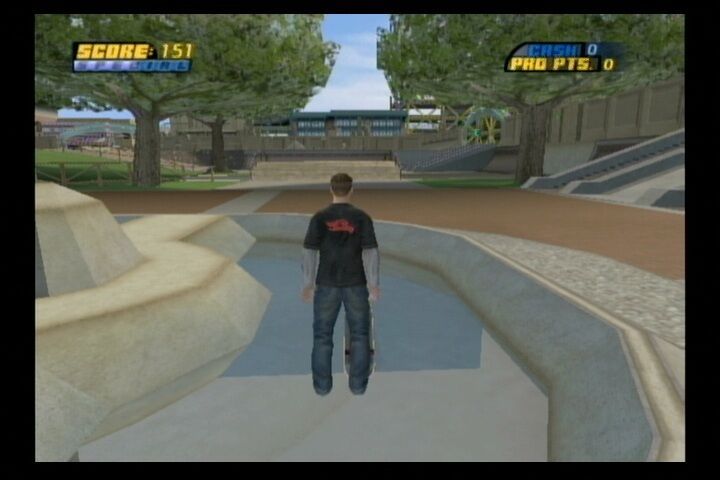
The strange thing was that Dolphin was emulating the effect as it was on the GameCube whereas PCSX2's hardware renderers we're rendering it incorrectly compared to the PS2! As a note, PCSX2's software renderer handled the effect correctly.
I wanted to understand why and see what the game was doing to create a bug that was not only present in a PS2 emulator, but the GameCube version of the game. Over time, I've learned a lot more about emulation and how the target console shapes our favorite emulators.
What these consoles offer, how specific games take advantage of them, and how developers work around limitations all play heavily into how hard it is to emulate a particular title.
Since running into that with THPS4, I've kept my eye on cross-platform ports of games and always been interested the differences between the versions. Sometimes analysis gives a rather interesting insight into both the game's design, late additions made to the game, and how unique console features make the same effects different for emulation.
One particular game that that ended up rather interesting to me was Hyrule Warriors. Because it came out across two generations of Nintendo consoles and a handheld, each subsequent release of Hyrule Warriors saw significant changes. So let's dig in and see how the game plays across three different systems and three emulators!
What is Hyrule Warriors?
Hyrule Warriors was originally developed for the Wii U console and released in late 2014. Built as a sort of Dynasty Warriors spinoff, it features gigantic battles against hordes of enemies with the world and characters from The Legend of Zelda games.
The Wii U version of the game holds up fairly well, with tons of enemies on screen and the gigantic battles still living up to their billing. You'll be fighting thousands of enemies, capturing bases, and taking down bosses all while strengthening your heroes through upgrades and leveling.
The game has a "Legends" mode which amounts to a story mode. While the writing leaves a lot to be desired, there are tons of cutscenes and missions throughout it. Additional missions and characters can be downloaded through updates and bought with DLC.
Outside of Legends mode, there is a free mode to let you take any character you want into the story mode levels. There's also a challenge mode which throws unique challenges at you that can be very difficult. The other main mode is Adventure mode. You're given a sprawling 8-bit map of a world with each tile representing a battle. There are 128 battles in the initial map that comes with the game, though more maps with greater rewards can be purchased through DLC.
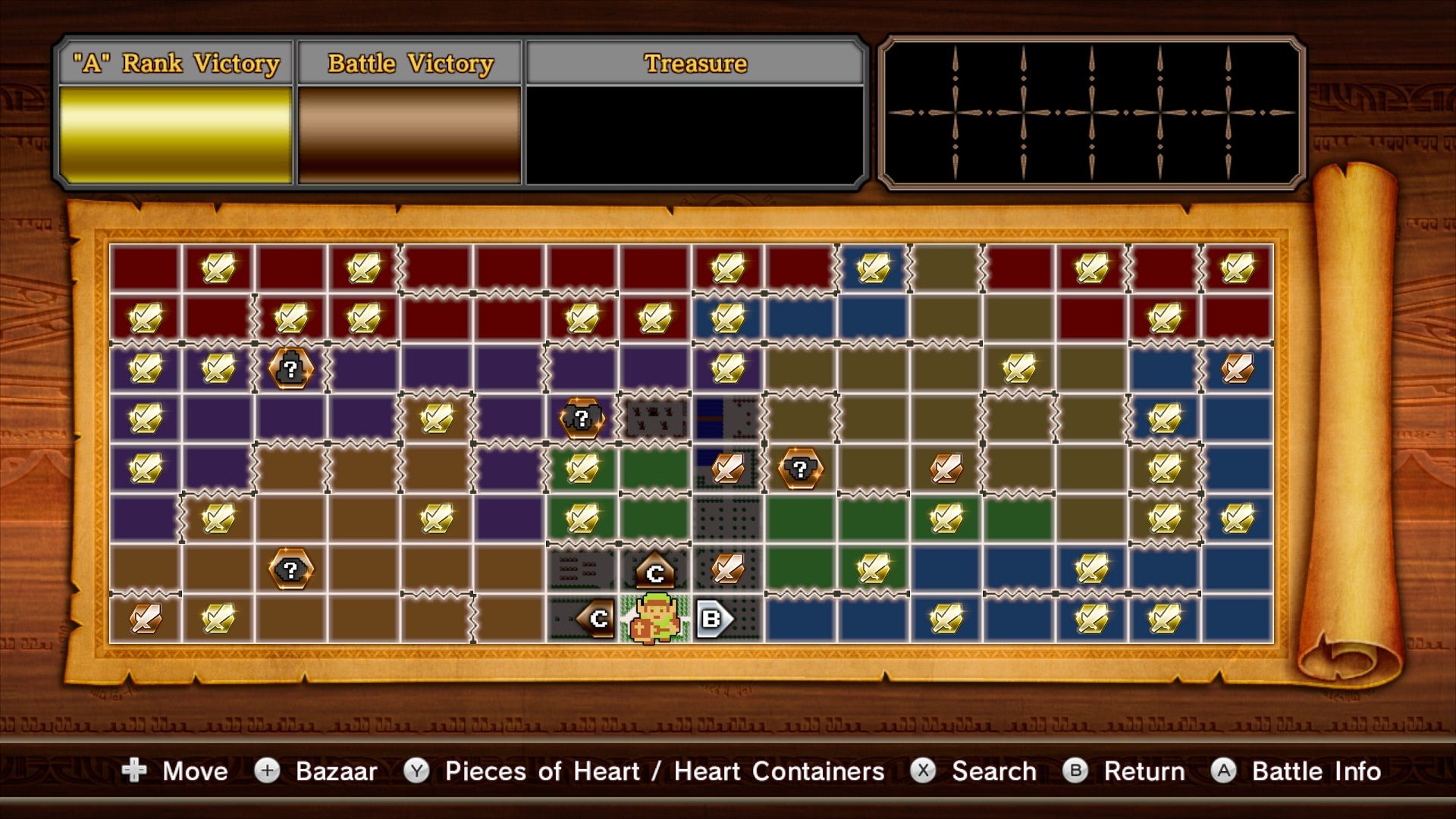
One incredibly frustrating thing that I have to mention is that a lot of maps will have clear conditions based on rank. Frustratingly, the game never tells you what the A-rank requirements are for a map. By far the most annoying part of adventure mode is spending twenty minutes fighting only to miss out on an A-rank and an important unlock because you prioritized the wrong categories too much.
Adventure mode is still worth playing despite these problems. You can unlock new characters, new weapons, and stronger weapons that can help with tackling more challenging content. There's also some interesting challenges and battles that are completely unlike content in other parts of the game.
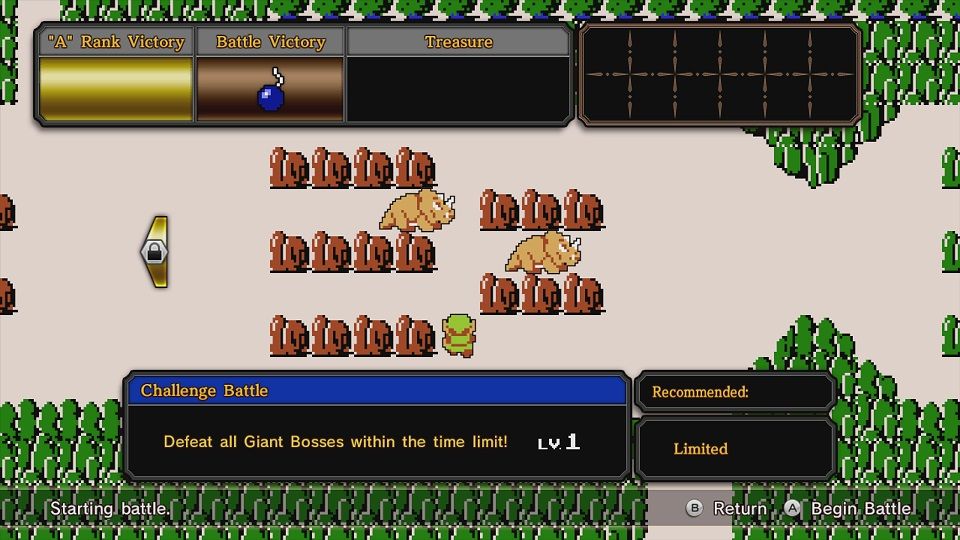
The game also features a challenge mode that you'll want your characters maxed out to get the highest ranks. In challenge mode, it's not about winning or losing, but accomplishing as much as you can within time limits. Higher level characters with stronger attacks, more special attacks, and more health are at a great advantage here.
As a very pleasant surprise, every single mode in this game can be played in local co-op that takes advantage of the Wii U's tablet. Each player gets their own screen and it can be fun coming up with strategies to beat each level as efficiently as possible. You can even take on some harder missions at a lower level than is possible alone!
Unfortunately, the Wii U itself limits the enjoyment of the game quite a bit. Load times are pretty lengthy to do just about anything and the framerate is inconsistent. Multiplayer is even worse, with the enemies seeming a bit sparser and the framerate dipping even in some of the smaller levels.
If you can ignore the faults, Hyrule Warriors on Wii U is a fun game with tons of content. It's easy to see why it was a well received entry in the series of Dynasty Warriors style of games!
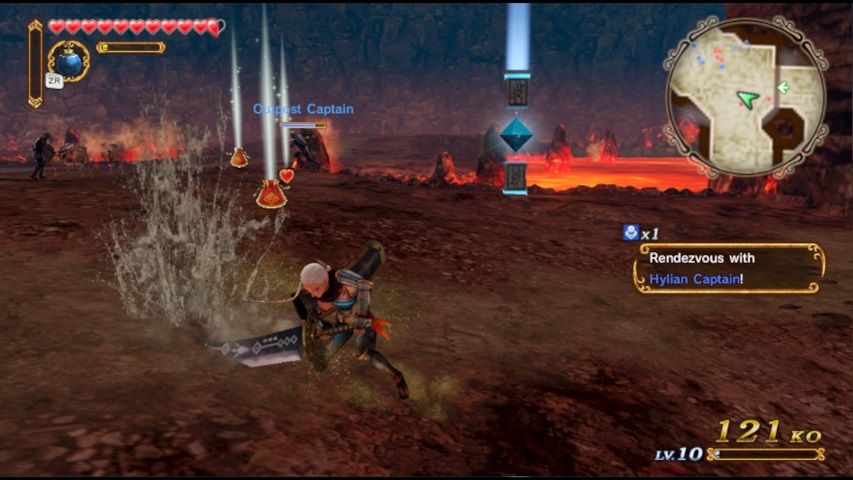
Emulating the Game on Cemu
Cemu is the most complete Wii U emulator in the Wii U emulation scene, thus it was my first choice for emulating this game. The other option was decaf, which while it can boot commercial games, it's not quite as robust. Most people people looking to emulate Wii U games will be using Cemu and it's going to give the better experience right now.
The first thing you'll notice on emulator is that loading times are greatly reduced compared to console. Booting up the game and loading the first mission takes ~30 seconds less in Cemu than on my Wii U, even with my games being stored over the network. Part of the reason may not even be the disc loading speed itself, but the fact that the slow Wii U hardware has to decode the compressed assets. Either way, Cemu is so fast that many loading screens barely have a chance to show up.
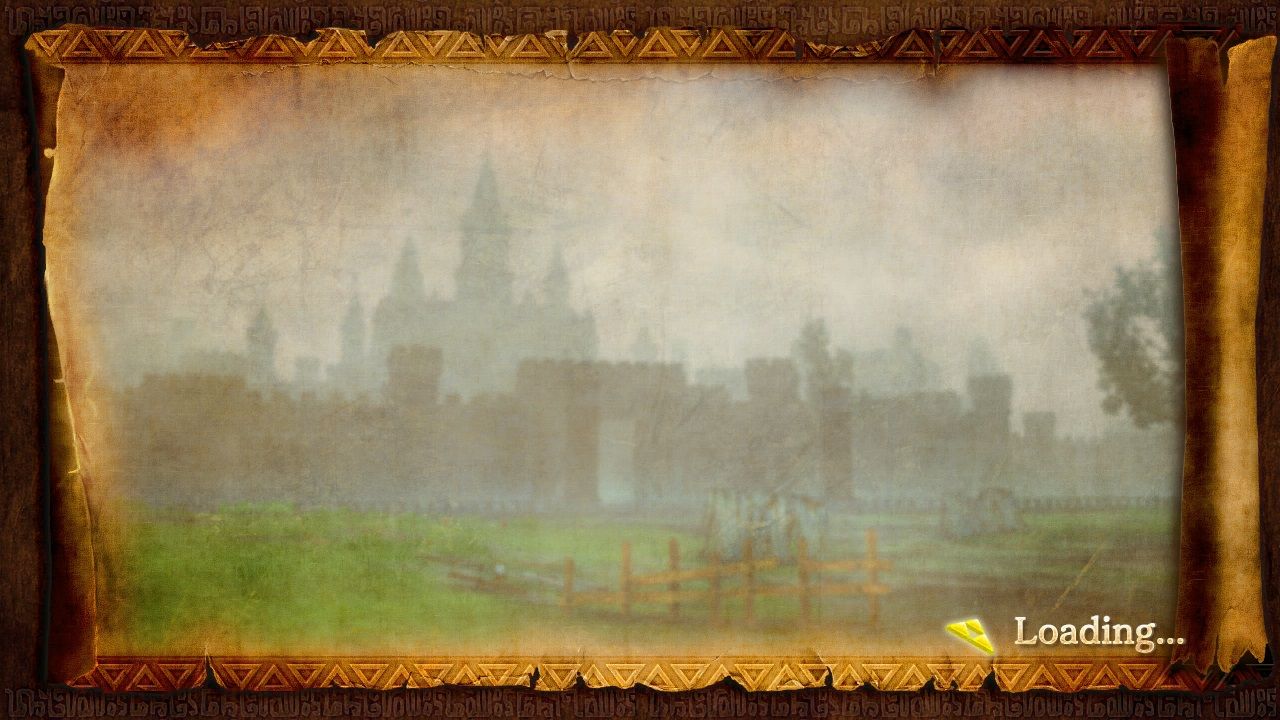
Your first time in-game will be a bit bumpy, especially at first. There will be long pauses as Cemu has to generate and compile shaders. Thankfully, within a few missions the shader generation issues disappear almost completely. Even by the second mission, it was mostly gone.
While the game is playable, there are some visual issues that you'll notice right away. Upon killing enemies, if you're on a NVIDIA card you'll see a mess of black, white, and green on the screen. The game employs some kind of blending technique to discolor enemies as they die and on Cemu, this is rendered in a rather distracting way.

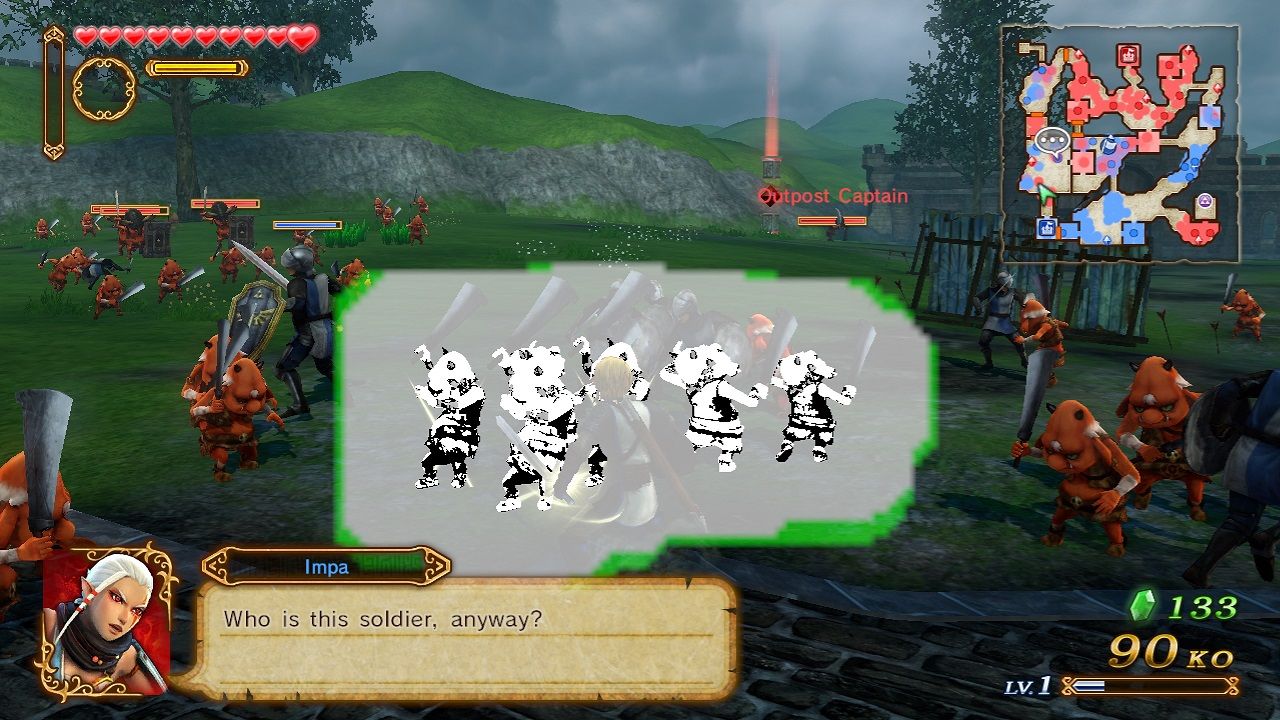
By asking around, I found out this is actually an interesting issue. Cemu relies on undefined behavior in shader code when handling NaNs in some instructions. AMD drivers do what the Wii U does, perhaps because the Wii U features an AMD graphics card, while NVIDIA drivers handle it differently.
If you're on a NVIDIA card, you're not exactly out of luck on this issue. Community made graphics packs or an emulator provided option to reduce shader mul accuracy can greatly reduce how much the issue impacts the game.

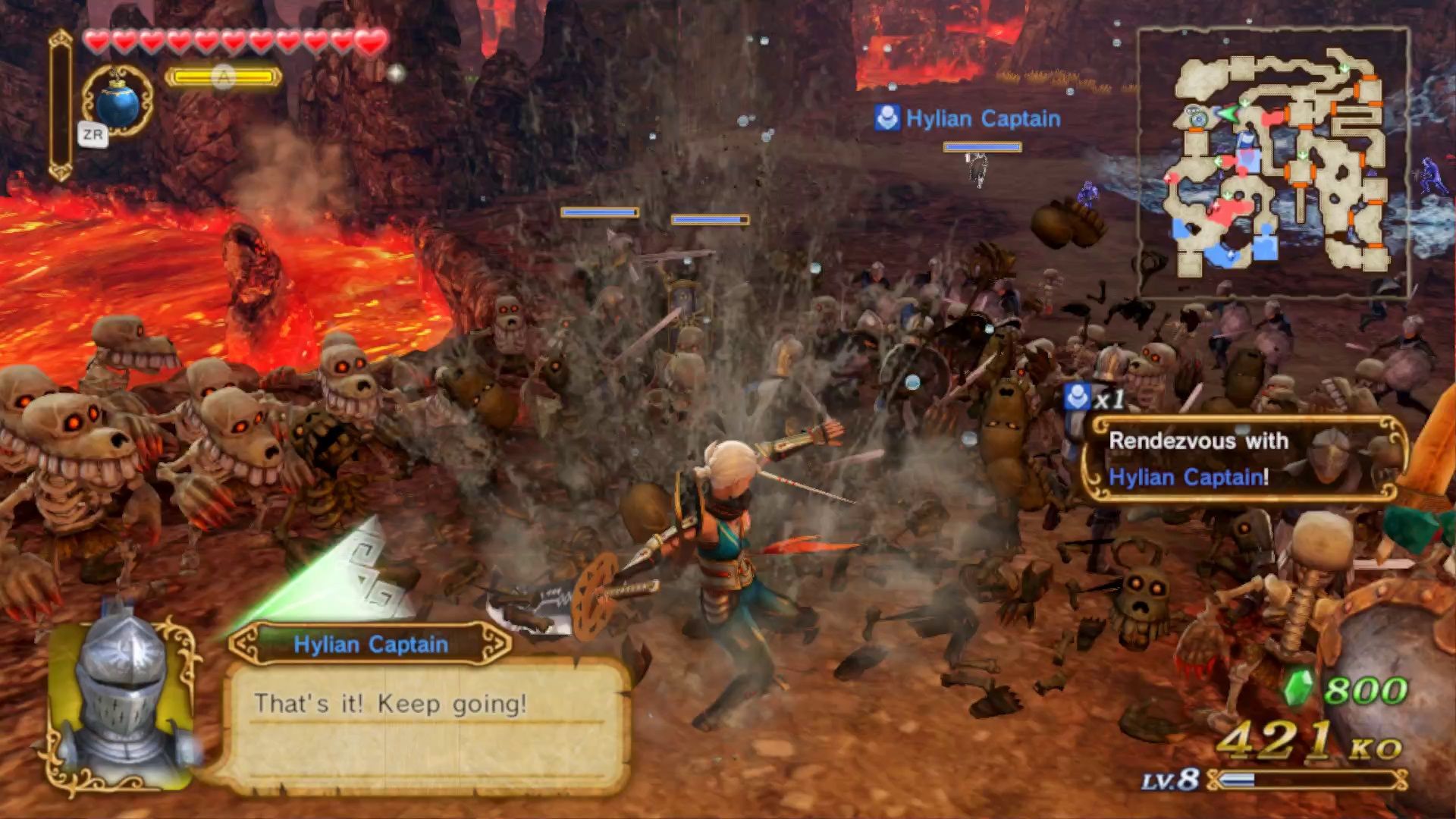
Right now, there's no way to completely fix this issue, but there is hope for a proper solution in the future. Patrons have early access to an incredibly WIP Vulkan backend. While there are tons of other missing graphics and bugs, it does actually handle enemy deaths correctly like console.
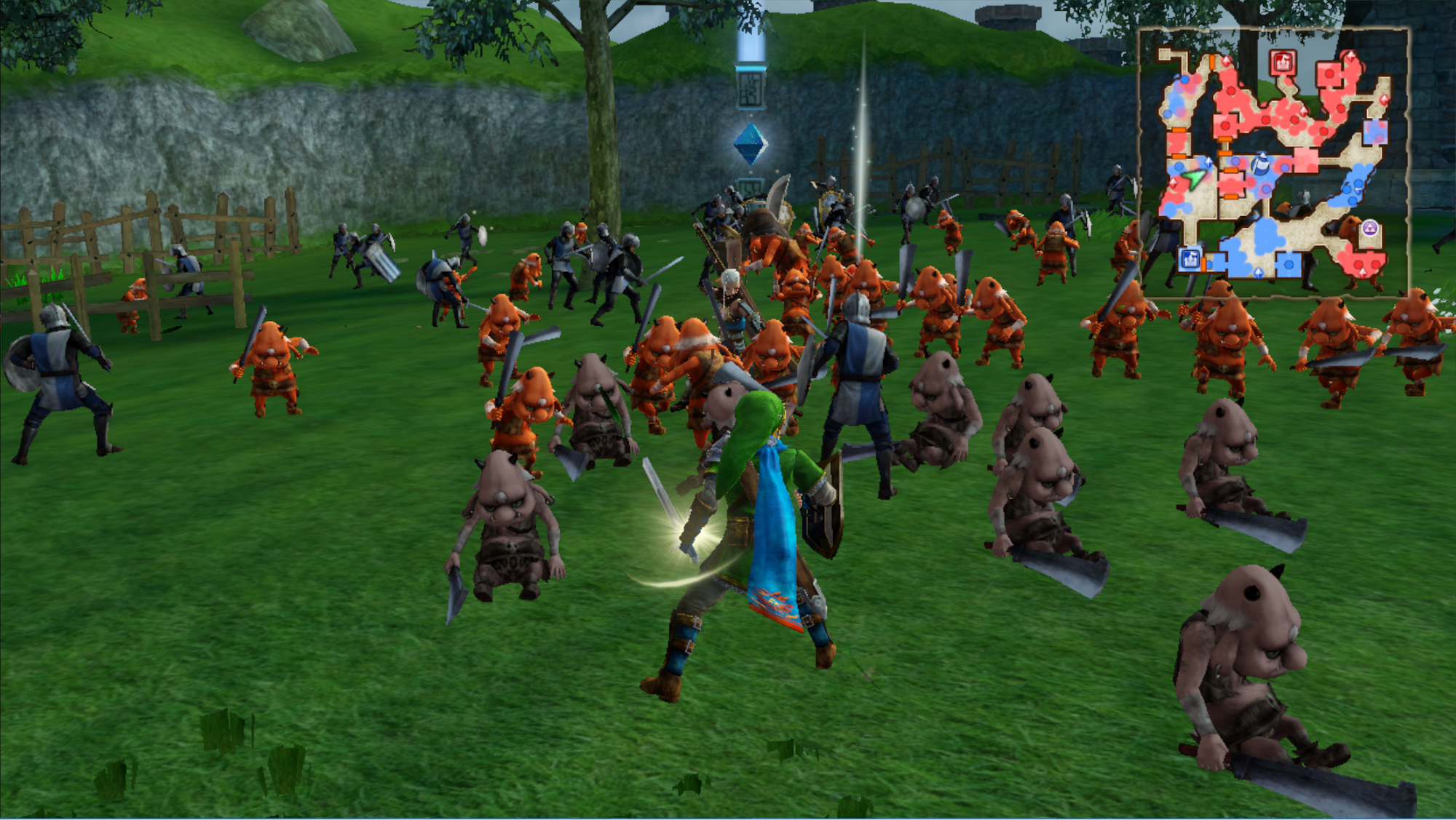
Regardless of the visual issues, the game plays incredibly well in Cemu. On my Core i7-6700K + NVIDIA GTX 1070, the game game maintains a solid 30 FPS outside of shader generation, something definitely not true of the game running on Wii U.
I was having a blast as I played through the first level and was ready to start up on the next one when... the game froze.
Updates and Instability
One of the first things I typically do when I buy a game for emulation is to immediately dump it and then throw it at my emulator of choice. While this may work for GameCube and Wii, it wasn't a very good idea on Wii U. Because I didn't run it, I missed out on a ton of updates and additional content added to the game over time. Worse yet, version 1.00 hangs at the end of the first mission in Cemu.
Because I'm both lazy and curious, I tried everything to get Hyrule Warriors 1.0 working on Cemu. I tried playing through the stage with different timer settings, using Cemu hook for H264 decoding, and simply skipping the cutscene instead of watching it. Nothing worked for me, though there may be some magic combination of hacks and workarounds to get past it.
In the end, I finally listened to what everyone told me and updated the game to version 1.12.0 on the Wii U and dumped those updates so that they could be installed on Cemu. As a special note, even outside of the issue I ran into with Cemu, I highly recommend updating the game as it adds tons of quality of life changes and content that are worth having as soon as possible! With everything installed, I was able to pass through the first mission without major issues. I hope that someday the other versions of the game work, but for now at least there is something users can do.
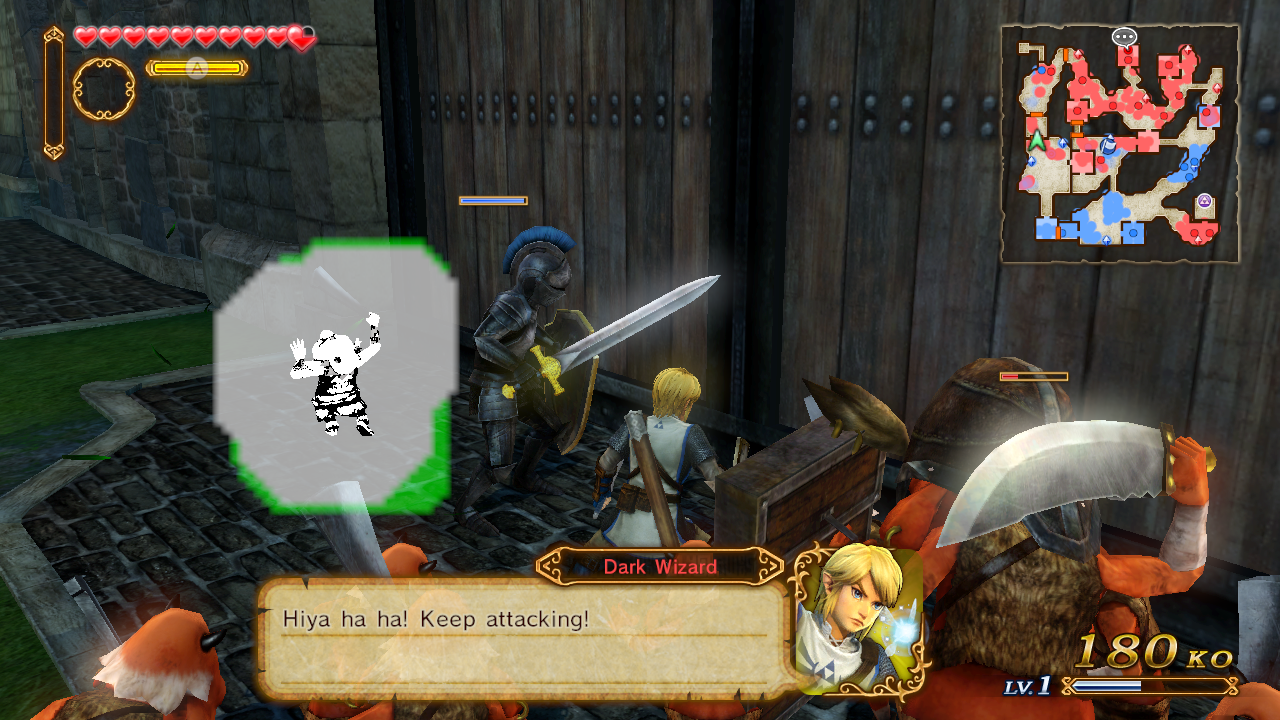

Everything was going fine right up until the end of the second mission where I experienced yet another consistent hang when I was supposed to be unlocking Sheik. Thankfully, the staff at Cemu's discord server was able to figure out what I did to make the emulator unhappy fairly fast.
DLC and Patches
In preparation for this article, I purchased both a copy of Hyrule Warriors for Wii U and Hyrule Warriors: Legends on Nintendo 3DS. The back of the 3DS version advertised that it came with a code that unlocked a few characters for the Wii U version. Despite buying teh game used, the code worked!
This ended up being yet another fatal error on my part, as Cemu doesn't like the DLC in this particular game. While it usually causes a hang on boot, apparently my progress through the game caused it to wait until the next unlock to trigger the hang that everyone else was getting at boot.
The recommended workaround for this is a patch to change a few addresses in memory. That patch enabled all DLC since all of the DLC content was actually included in the updates and buying DLC was just to let the game know to unlock them. While I could see someone arguing that this patch is "piracy", I honestly don't see it that way. Cheat codes to unlock characters have been a thing since the beginning of gaming and the content was already in my possession. To add to that, I bought the Definitive Edition over a year ago and it includes all of the DLC.

Once I had the DLC patch enabled, all of my issues with the game hanging completely disappeared. I continued playing the game trying to see if it would crash again but it never did. I didn't even run into any of the supposedly random hangs reported by other users playing across the main story in Legends mode.
As an important note, the enemy death glitch takes on a much worse form in the second mission, causing all lighting to dim whenever an enemy is dying. Using the Shader Mul Accuracy - False doesn't help with the distracting lighting issues. Thankfully, the graphics pack workaround for the enemy death glitch completely mitigates this issue.
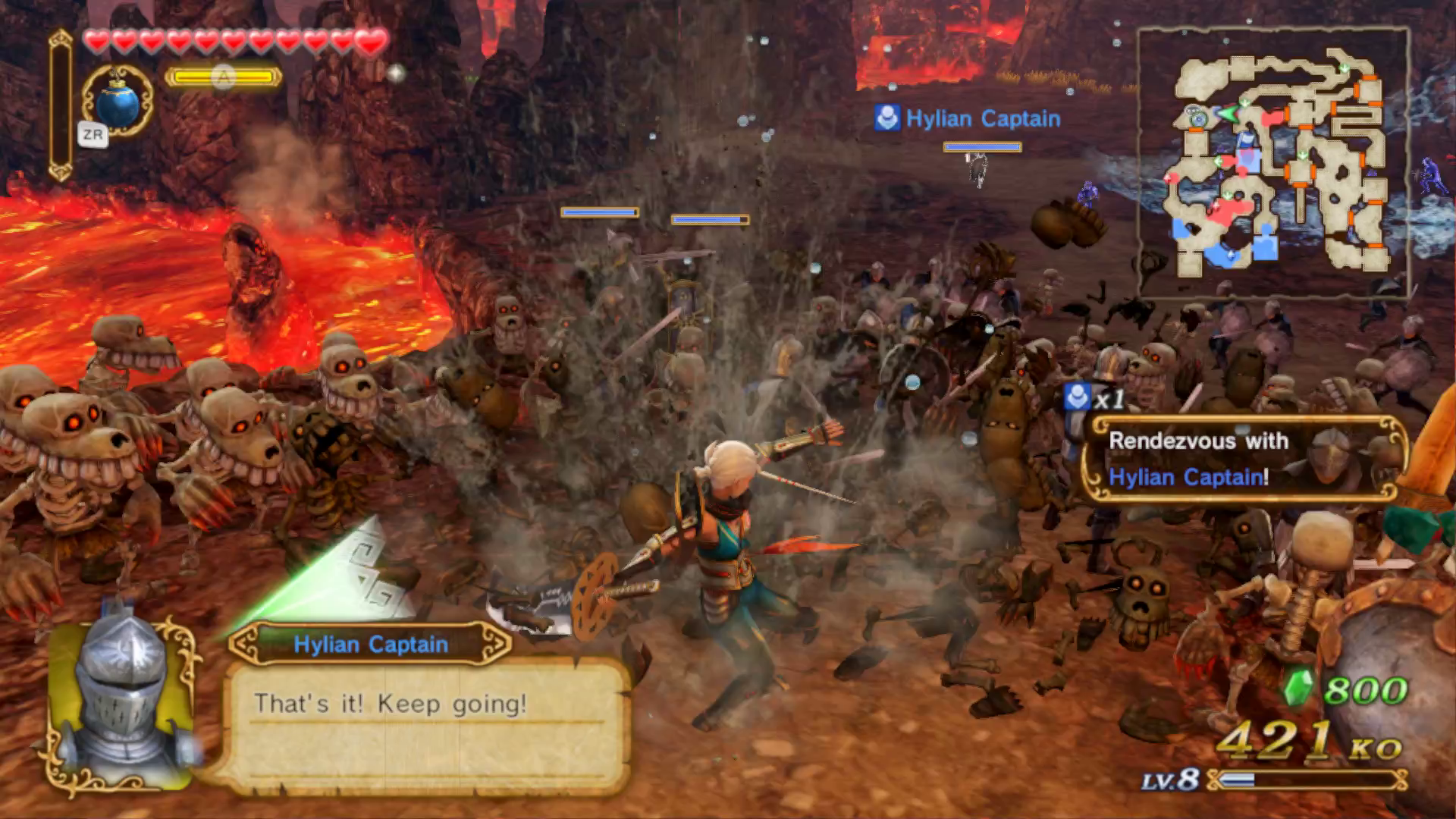
Multiplayer and Cemu
One of the things I like to do is read through the manual when checking out a new game. While I did know a later version of Hyrule Warriors had multiplayer, I didn't know about the Wii U's multi-screen multiplayer. That's because you need a compatible controller connected before it will let you know it exists!
Multiplayer in Hyrule Warriors on Wii U is a bit of a mixed bag. The framerate is a lot less consistent, enemies sporadically spawn (especially when players are far apart,) and the game looks blurrier in general. Still, cooperating with a friend and having a full screen to yourself is a blast! You can really optimize stages or take on bosses that may have been impossible alone.
Unfortunately, Cemu struggles a lot more with multiplayer, with some minor and major issues pertaining to graphics. Don't get me wrong, multiplayer on Cemu is playable, but it can be a bit of a pain.
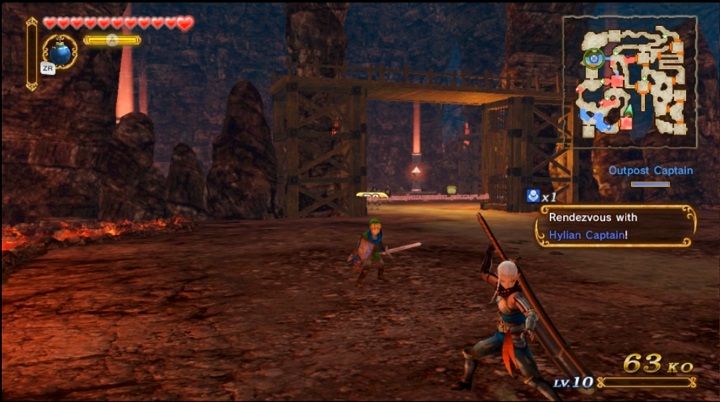

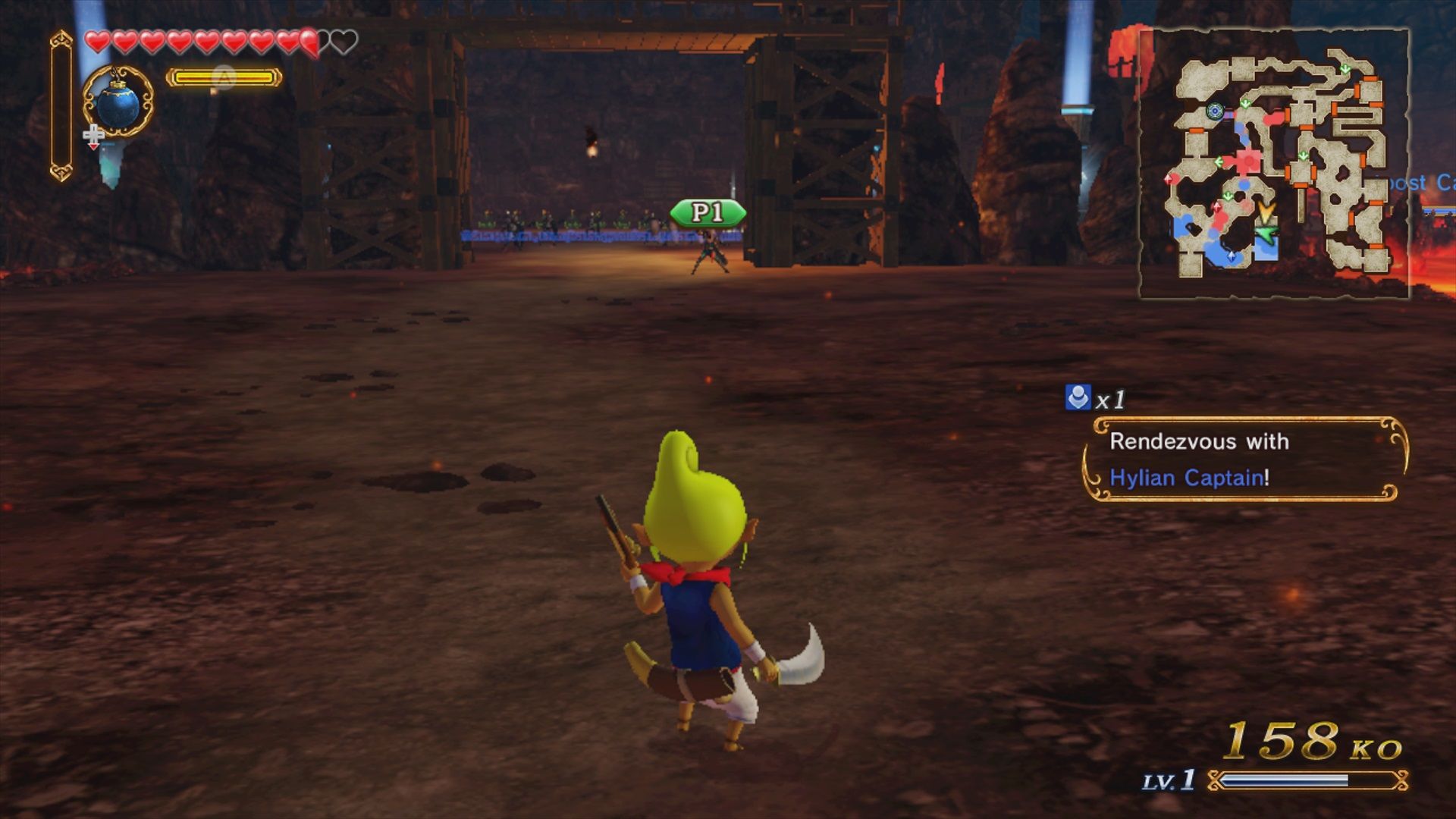
A much worse issue with multiplayer in Cemu is that sometimes graphics will begin to flicker. Usually it's just 2D elements such as the minimap, but in some very rare cases the entire output would flicker.
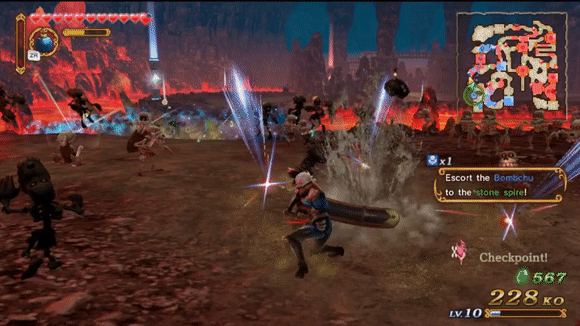
My experience with Cemu was simultaneously incredible and frustrating. The game ran better than I could have ever imagined... which is where the disappointment comes in. It's so close to just being this perfect, seamless experience that anyone could jump into. If you read up and are willing to patch the game, then you can essentially avoid most of the issues. If you have a strong enough computer and are willing to risk hangs, you can even push the target framerate from 30 FPS to 60 FPS with a mod.
None of the hacks for the graphical issues are permanent solutions for correct emulation. That said, the overall experience was pleasant and my major gripe is that we need to use a few hacks and a specific version of the game. The core experience is emulated very well, making me optimistic that the rough edges will get smoothed over soon enough.
...On an aside, it would be neat if someday options were added that allowed for better simulation of loading times and GPU timings so that users could see how the game ran on Wii U. But that's something for the far future, and maybe even an emulator with different goals.
Hyrule Warriors Legends
After becoming one of the best selling games on the Wii U, Hyrule Warriors got a surprising port to the Nintendo 3DS in the form of Hyrule Warriors: Legends. Featuring tons of new characters, an additional story line based on the Wind Waker timeline, and the ability to swap between multiple characters during battles, Hyrule Warriors: Legends added a wealth of content on top of the Wii U base game.
Because the game pushed the Wii U so hard, I was incredibly skeptical that a port to a much weaker handheld device could capture the experience. As soon as I booted up the game, my fears were mostly realized. The graphical downgrade in the first mission is downright shocking if you've played the Wii U version. As a note, I used Citra to get clearer screenshots of the game than possible on my 3DS.
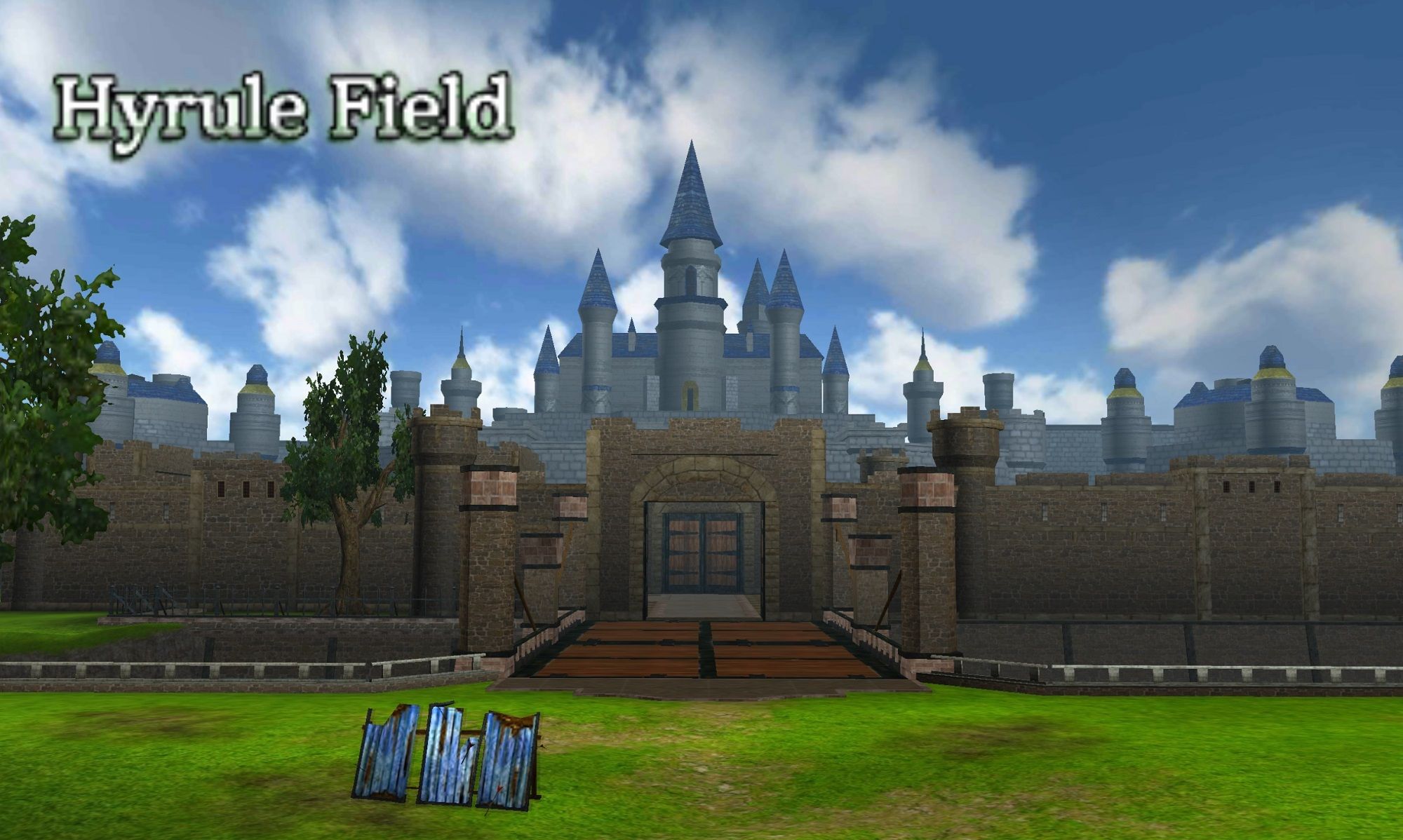
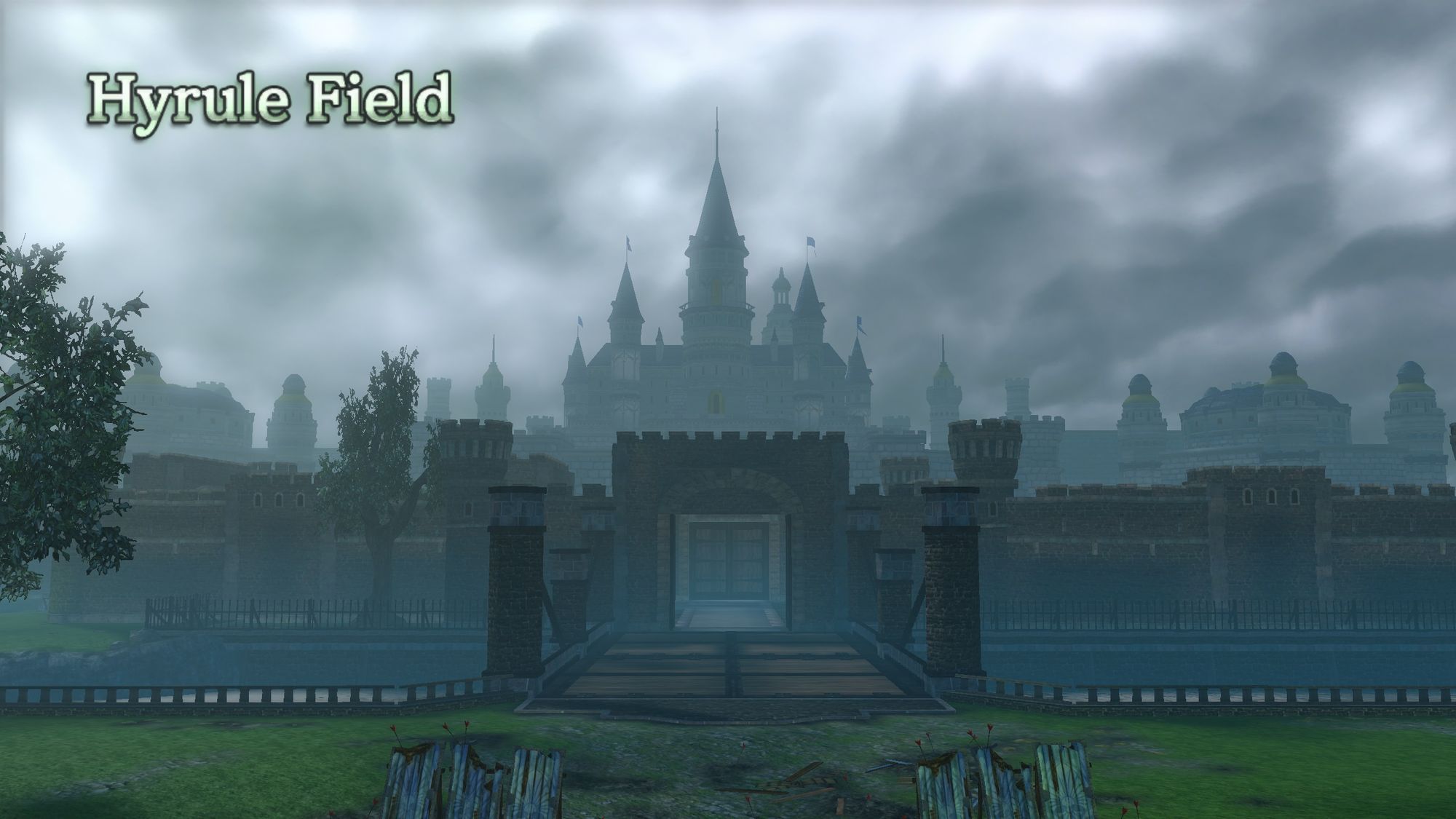
In order to compensate for the loss in hardware power, the developers opted for a simpler style with outlines around models and less detail in general. On the first mission especially, it results in a markedly less epic feel as you're fighting under pleasant skies and open fields instead of a foggy battlefield befit of an otherworldly invasion. Most ancillary details are missing altogether and only the very basics of areas remain.
The game itself does play like the Wii U version. This isn't some port that feels like a completely different game. It's just that the visual downgrade is very hard to ignore when you've just been playing on the console version. Many of the special attacks that were so impressive on the Wii U were simplified or removed. FMVs and audio have similarly lost some quality, with cutscenes playing at a lower resolution and framerate and character voices sounding particularly fuzzy when played over headphones.
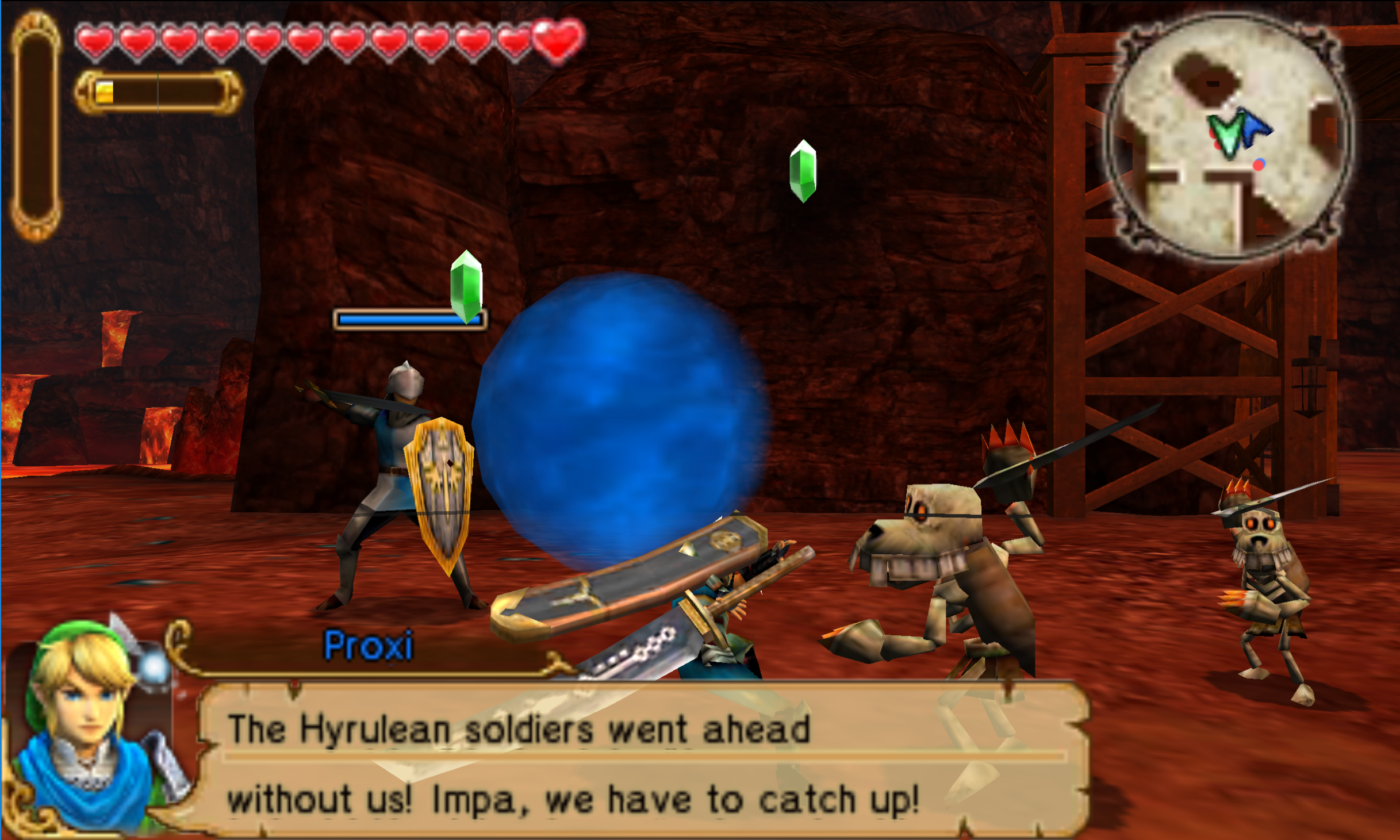

For a game about huge battles, the biggest sin is that the original 3DS simply can't render that many enemies at once. Sometimes you'll be swinging at an enemy right in front of you and it'll despawn to make way for another enemy to spawn, and then respawn after your swing has already missed. This is a constant problem and the pop-in is outright distracting to a dizzying degree.
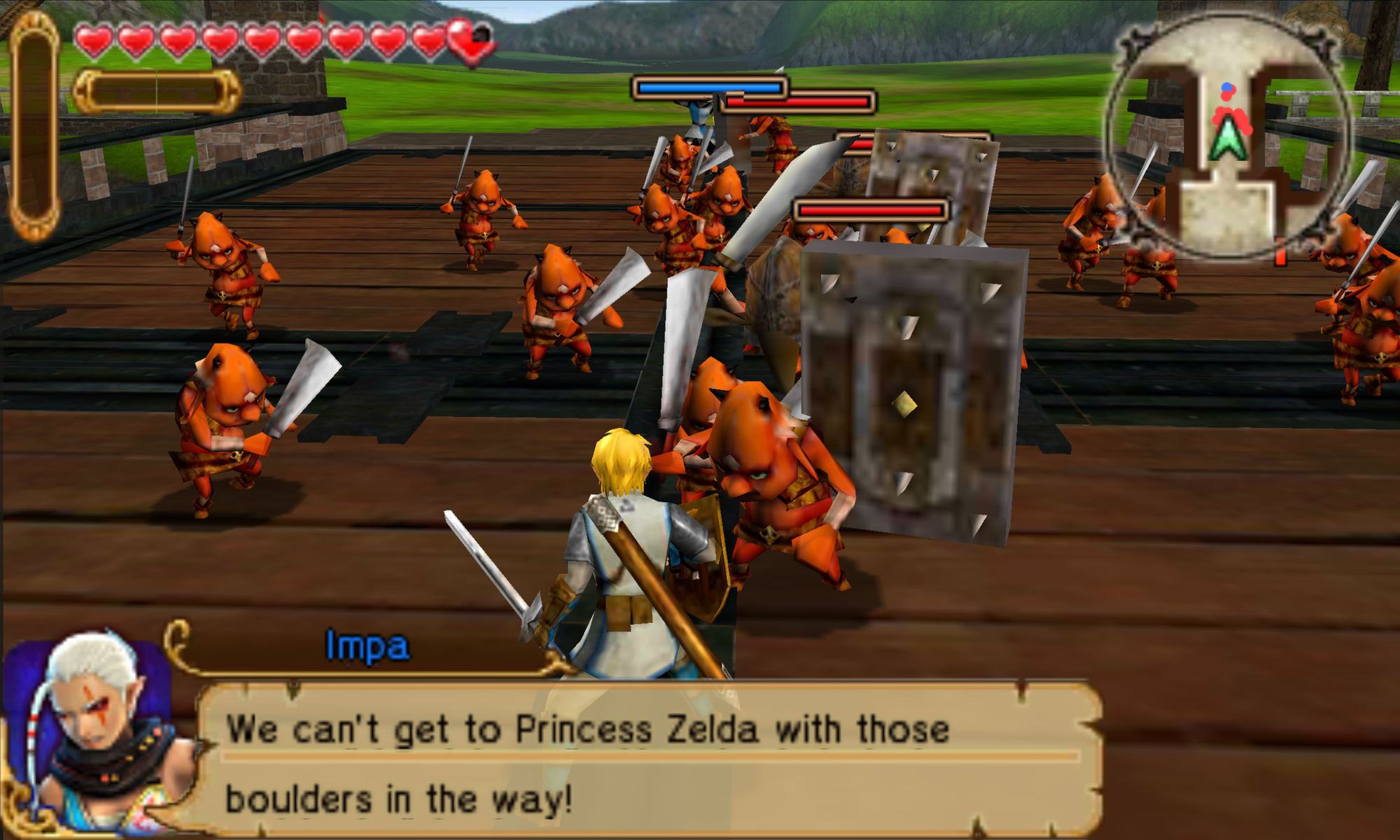
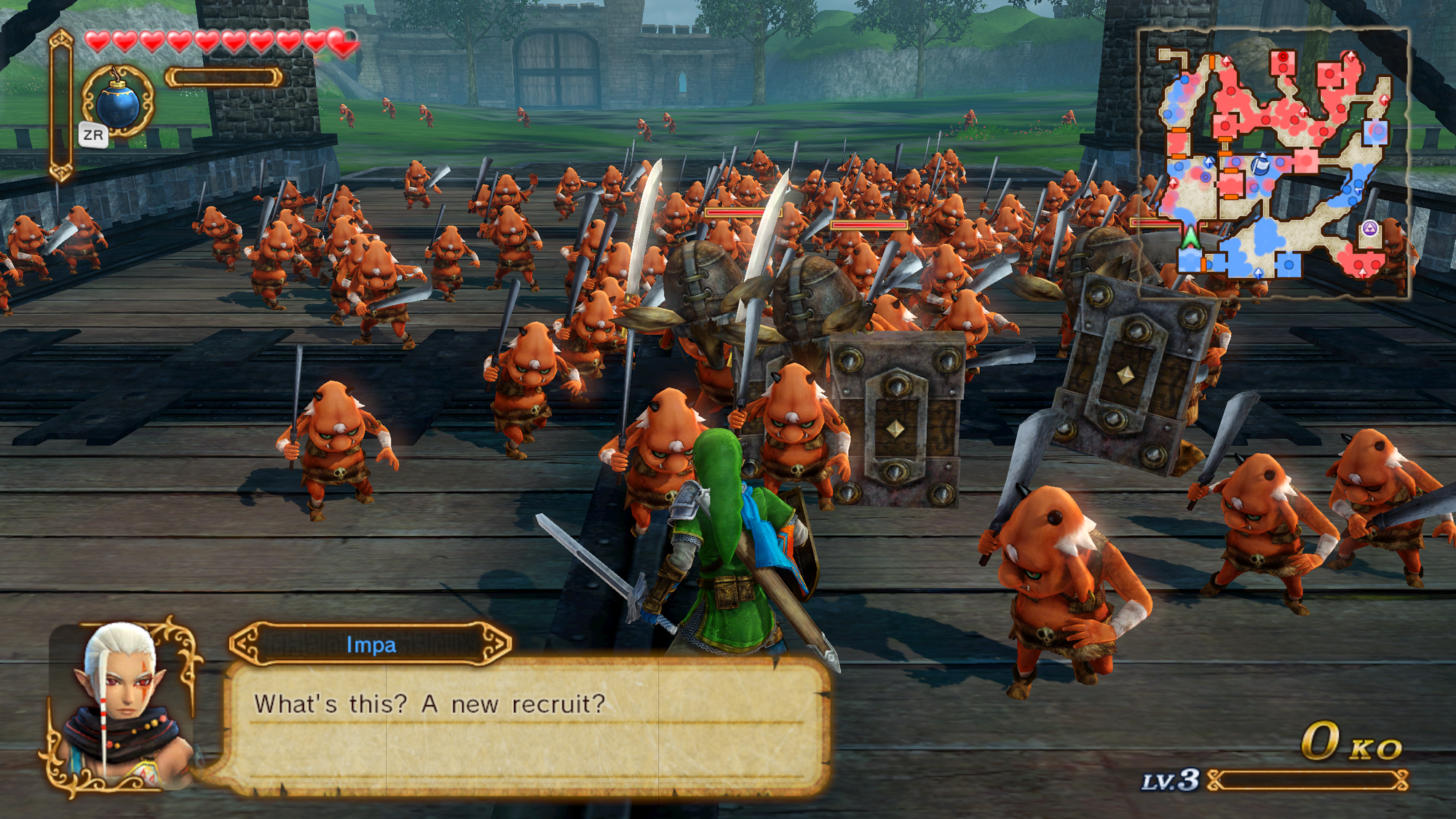
On the original 3DS, the game is constantly struggling with slowdown and choppiness. It's impressive they made the game work and didn't compromise on the story or stages... but a lot was lost in translation.
A Better Game and a Worse Game
Would it be weird after all of that to say that Hyrule Warriors: Legends has a stronger base game than the Wii U version? After you get past the stripped down graphics and shoddy framerate, you'll find that there were a surprising number of tweaks and new features added to this version. While some of the tweaks are simply to remove graphically stressful attacks, others seem like balancing changes. A lot of stages have new sections designed around the new mechanics not present in the original game.
As mentioned earlier, the biggest change is that you can now switch between hero units during most battles and even command them to do things when you're not in playing as them. This allows for much finer control of the battle and can allow you to work on multiple fronts at the same time.

Story missions are redesigned with new dialogue, side objectives, and rewards! This is important because while Hyrule Warriors on Wii U got some of the content as DLC, it didn't get this essential feature.
Hyrule Warriors: Legends is also home to a new mode called My Fairy. Throughout stages you'll find costumes and food items that can be used in My Fairy in order to power up a fairy companion to help you in your battle. From reviving you when you die, to giving you additional magic power, or protecting you from barriers, fairies can be essential to getting higher ranks and completing missions in time.
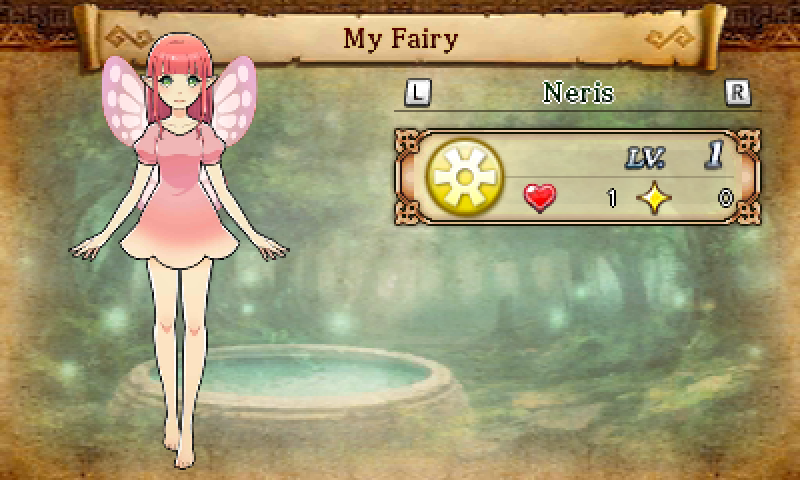
The new content does make a lot of the earlier missions more engaging. You have a reason to explore and try to find the new rewards instead of simply shotgunning to the end goal of every stage. The unfortunate thing is that Hyrule Warriors: Legends has a far inferior experience due to the hardware.
3DS Emulation to the Rescue
Emulation sometimes allows games to perform far beyond how they could on original hardware. While the preservationist in me wants an emulator that can emulate all of the lag and framedrops, sometimes it's just fun to have an emulator that truly unleashes the game.
That's what Citra is right now. Enhanced resolution and a superior framerate immediately makes it easier to play. According to the game database, this game requires a powerful PC to run, however I didn't run into any slowdown on my Core i7-6700K and GTX 1070 even when pumping the resolution up.
The side effect of upping the resolution is that it reveals just how barren and stripped down the environments are in parts of the game. The animated backgrounds of the Wii U version are left cut down and frozen. It's impressive that they managed to bring an approximation of the Wii U game to the 3DS, but a lot was lost in translation.
Interestingly, because some events are based on number of kills and there are less basic enemies, a few missions took a lot longer on 3DS. Adventure Mode missions that require more kills have time limits greatly relaxed to make up for the lack of enemies. Being able to switch characters mid-battle to find clumps of enemies proved necessary to get A rank in some Adventure mode missions, at least at my character's levels.

The one sticking point of the 3DS version is that even on Citra the game itself is limited by the 3DS hardware. The game won't spawn that many enemies and they're constantly despawning right in front of me.
Thankfully... there is a more powerful version of the 3DS, and Hyrule Warriors: Legends takes advantage of it.
Hyrule Warriors on New 3DS
Hyrule Warriors: Legends is a game advertised to be enhanced on New Nintendo 3DS hardware. After I tried the game out on my n3DS, I quickly saw that they were not joking. Most of my complaints with the original 3DS experience were actually addressed!
The framerate is much improved with slowdown more or less non-existent in the first couple of missions. Even when there is lag in larger battles, it tends to be rather mild compared to the constant drops that happened on the weaker handheld. And speaking of heavier areas, a lot more enemies spawned in than compared to original 3DS hardware and Citra.
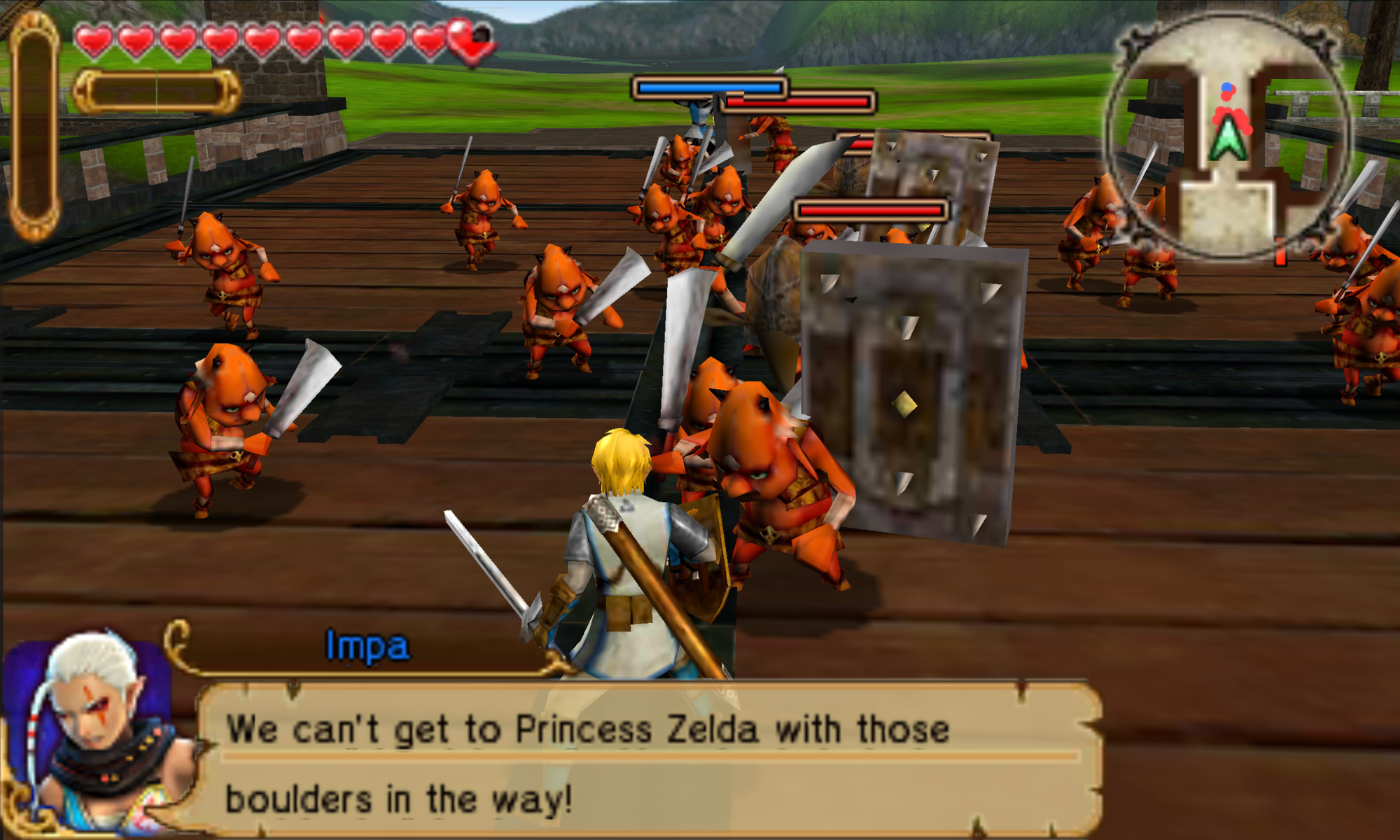
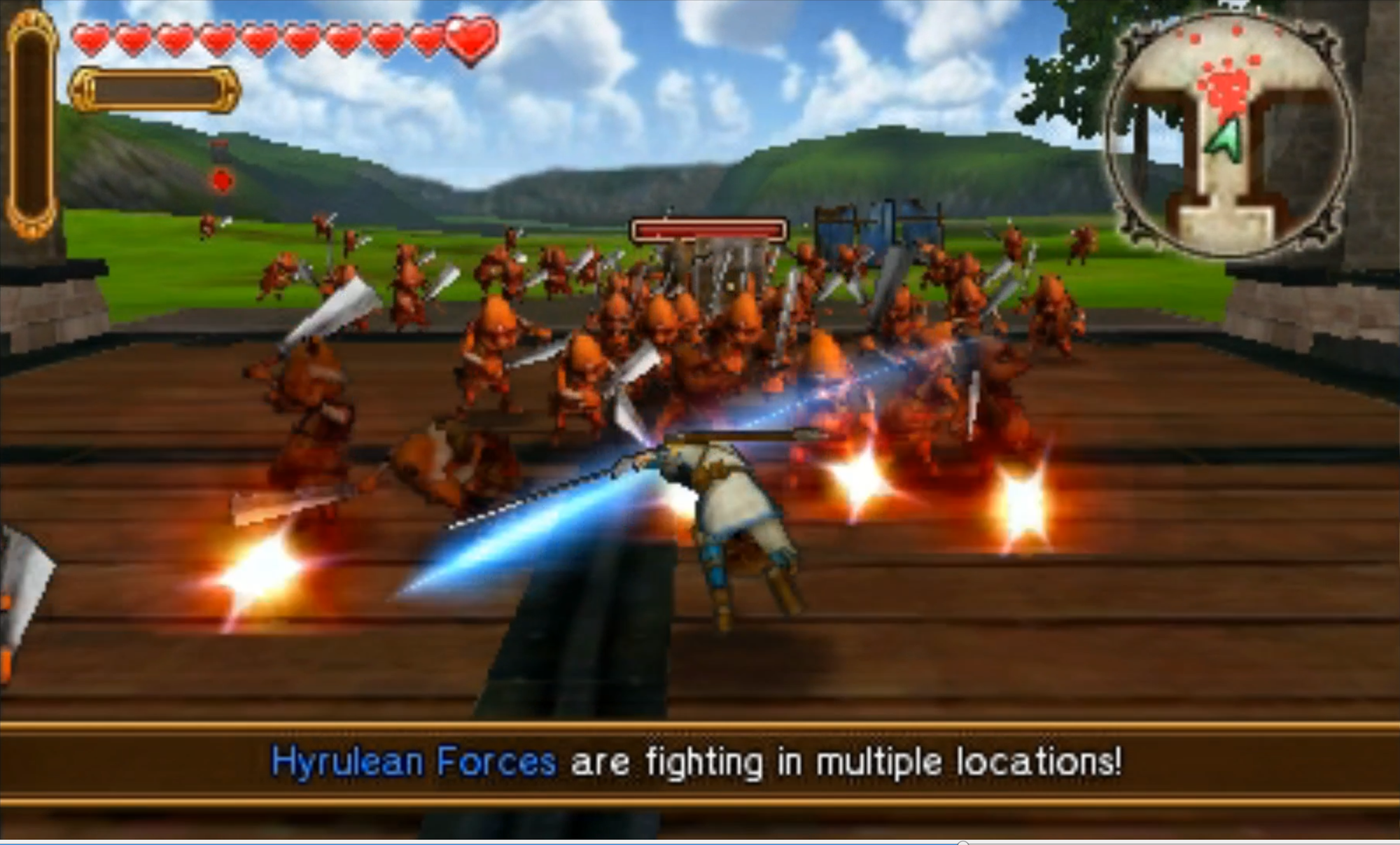
This greatly helps the game feel like the Wii U version as the battles start to reclaim some of the grandeur they had in excess on the console edition. Don't get me wrong, terrain draw distance and enemy pop-in are both still fairly distracting. But here? It's a minor problem instead of something that you're constantly fighting with.
While it's an obvious graphical downgrade compared to the Wii U version, the new gameplay elements do make it a tempting choice to play over the Wii U version. Plus, if you're a fan of 3D effects, you can actually use the 3D screen when playing on New 3DS for added depth... and some slowdown. The effect is actually fairly impressive and can be fun to use in bursts.

This is where Citra ends up in a very strange place. Citra currently emulates original 3DS hardware, not New 3DS hardware. For Hyrule Warriors: Legends, the game itself is heavily downgraded when running on original 3DS hardware. Emulating New 3DS hardware is quite a pain for Citra as it wasn't designed for the multi-core nature that is the new 3DS. Scheduling and emulation of another CPU are required.
Despite this, developers have been hard at work on New 3DS emulation and allowed me to test some experimental changes with Hyrule Warriors: Legends. In these builds, Citra would report itself as a New 3DS and has modifications for extended ram and some other hardware differences.
And it worked! Sort of. The game did boot in n3DS mode as the game as the draw distance for enemies was lengthened and enemy animations were extended. However, it didn't do things quite right as the enemy density was unaffected.
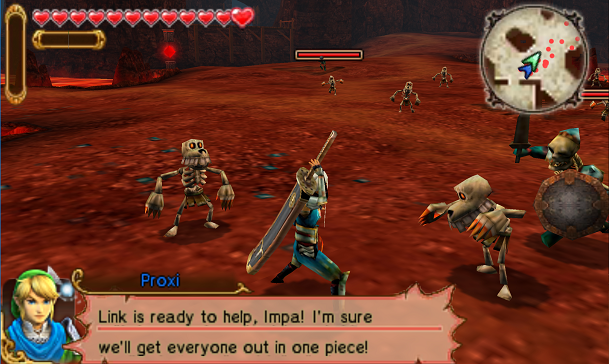
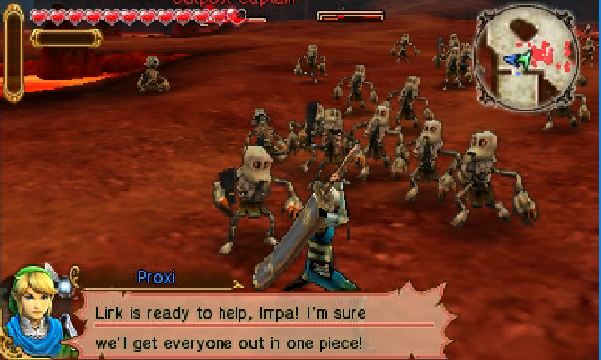
Despite not quite hitting the mark, it is quite nice to see the game at least running in n3DS mode. It's a slightly better experience than emulating the game as if it were running on original 3DS hardware but nowhere near as good as real n3DS hardware.

Why is the game not running correctly? No one is sure quite yet. All there is to do is to keep implementing n3DS features correctly until the game starts working. Whether it is Citra or another emulator that gets this game right, I do believe that the n3DS version of the game is worth seeing if you're a fan of the other versions.
Graphical Issues on Citra
Beyond the n3DS issues, Citra does have a few minor problems emulating Hyrule Warriors: Legends. If you've played the game on 3DS, you'll quickly notice that character outlines that help make the game look more stylistic are missing. However, outlines around objects render over everything. This results in the game not quite looking up to par.
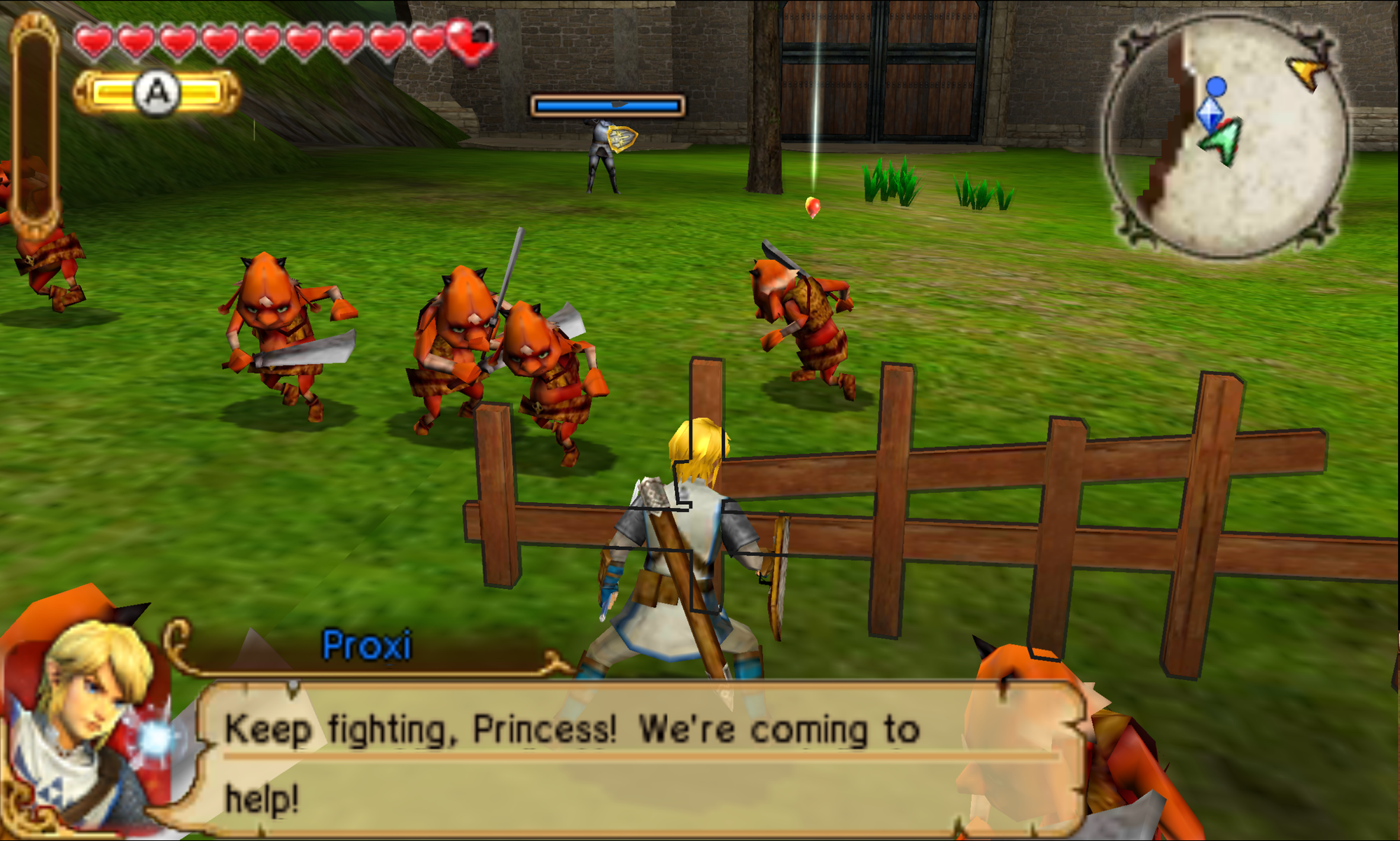
Neither of these bugs can be remedied using Citra's software renderer, making me believe there is a problem deeper in the emulator. Worse yet, software renderer even crashed on me in the main menu. Thankfully, I didn't see any crashes in the hardware renderers and was able to play through several stages unimpeded.
Whether you can stand playing the original 3DS version of the game or not determines if you can enjoy this game in Citra. There are less enemies, more pop-in, and graphical glitches as you play, but you also get higher resolution graphics and a much smoother framerate than possible on original 3DS.
If only there were a version of the game that combined the portable nature of the 3DS with the power of the Wii U...
Hyrule Warriors: Definitive Edition
Hyrule Warriors: Definitive Edition was released in 2018 on the Nintendo Switch. This is the version of the game I'm most familiar with and one of my favorites to play when I'm between other games.
Definitive Edition strives to be the best version of the game by combining both the Wii U and 3DS versions into one complete package along with some enhancements. The game features the Wii U's graphical style with the resolution bumped up and the target framerate pushed to 60 FPS.
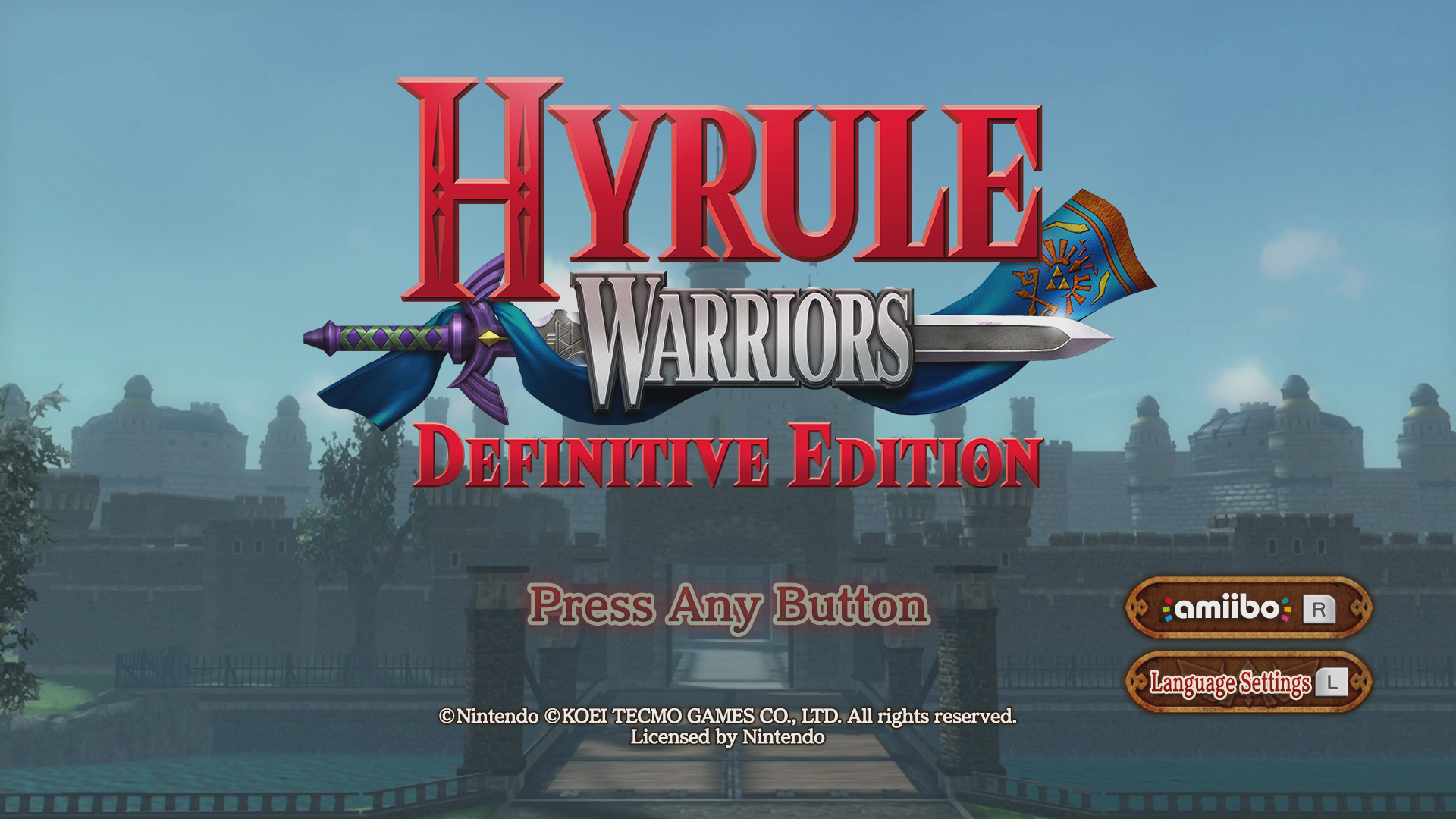
But this is not just a port of the Wii U version plus DLC. The game has all of the modifications and enhancements developed for Hyrule Warriors: Legends. That means that you can switch characters, raise fairies, and play the more substantial 3DS versions of stages.
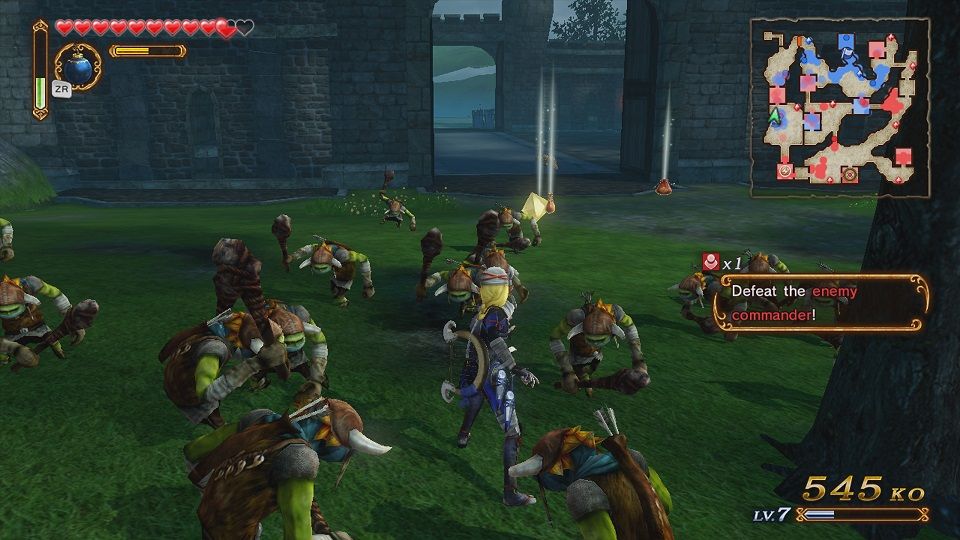
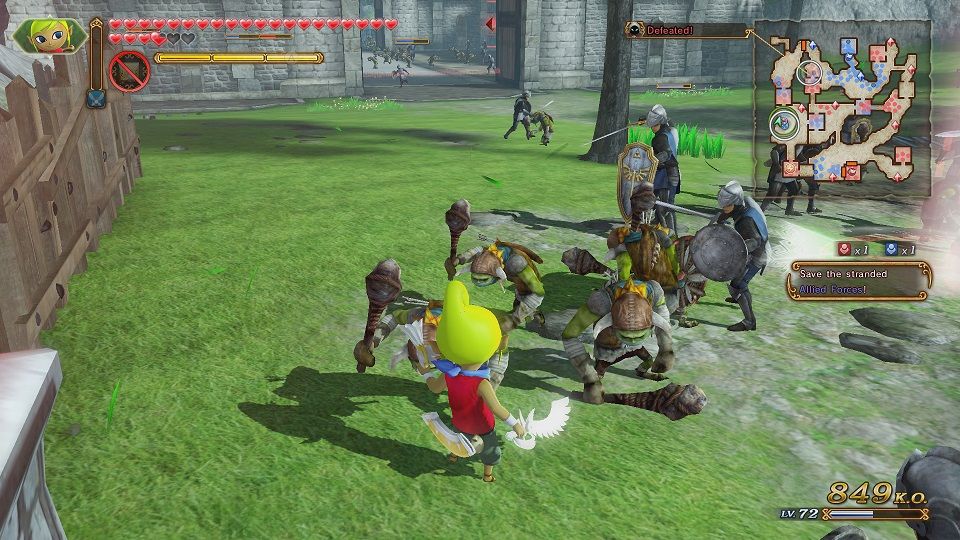
My Fairy has seen a complete visual overhaul and has been reborn with full 3D graphics. The functionality remains mostly the same; raise fairies to give you essential boosts to help you weather the storm of giant bosses and hordes of enemy captains.

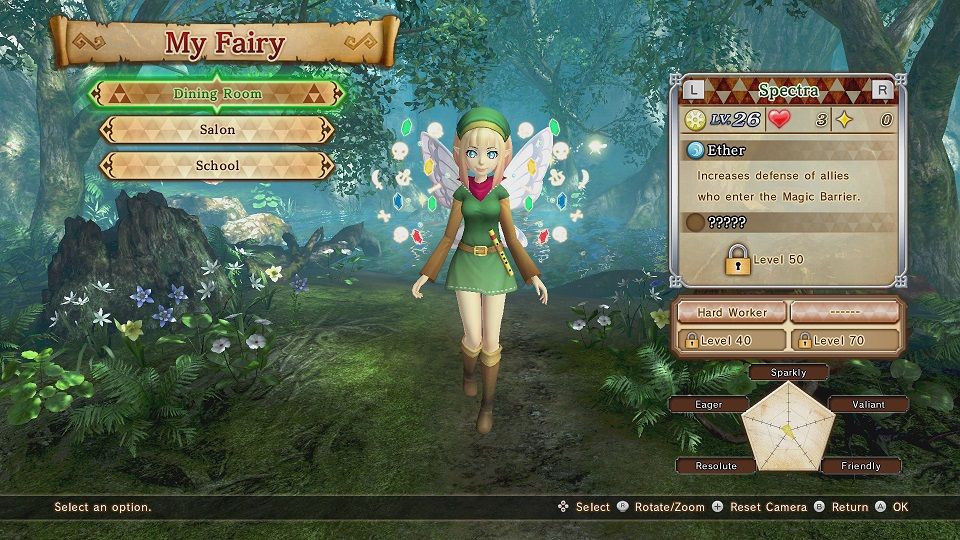
Adventure Mode in Hyrule Warriors: Definitive Edition is actually almost overwhelming. When the game first launched on Wii U, there was only one map with over one hundred battles with many having secrets to find. On Nintendo Switch you start with all of the adventure mode maps, including those only present in DLC exclusive to one version previously.
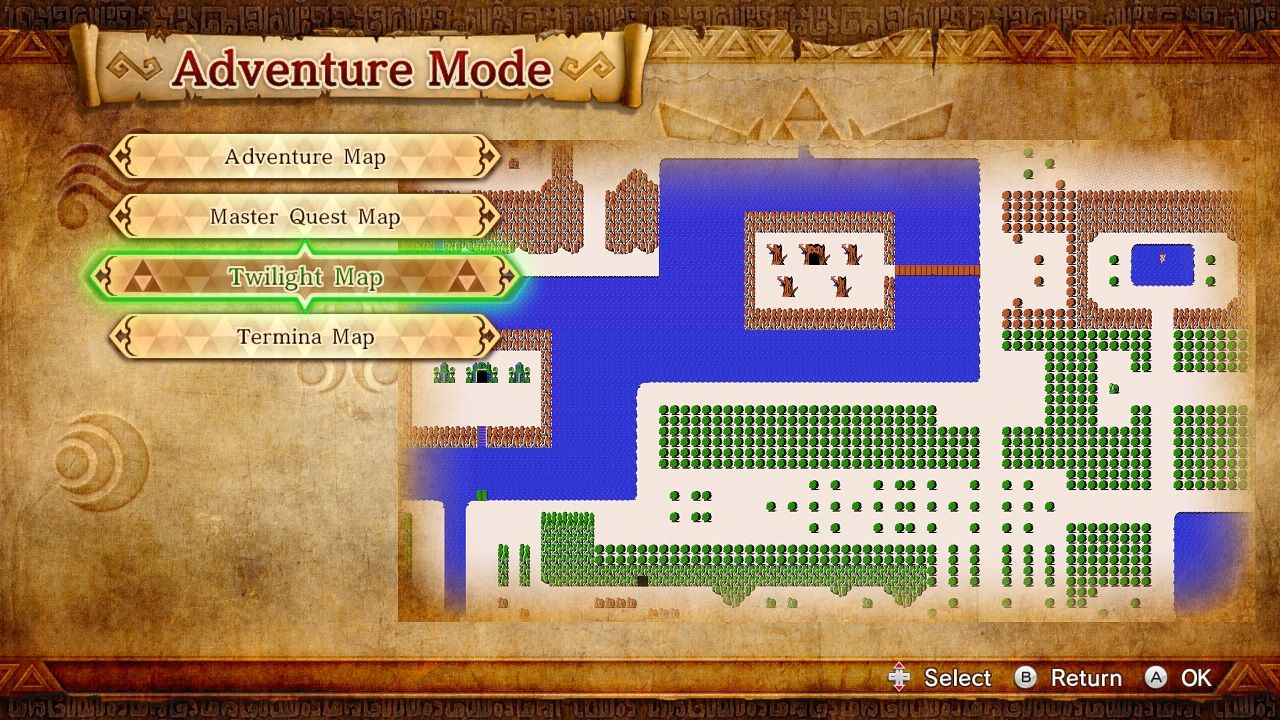

The developers rebalanced rewards and gave each map a difficulty to help you choose where to start. Easier maps can help you level up your characters, unlock new characters, and unlock stronger weapons. Harder maps have better rewards, including legendary weapons that can greatly enhance your favorite characters.
My only major complaint with Adventure Mode is that they still don't tell you the A rank requirements. Sometimes it's 1500 KOs, sometimes it's 1800 KOs, sometimes you don't need any number of KOs at all! Do yourself a favor and find a guide that lists out all the A ranks unless you want to deal with a lot of frustration.
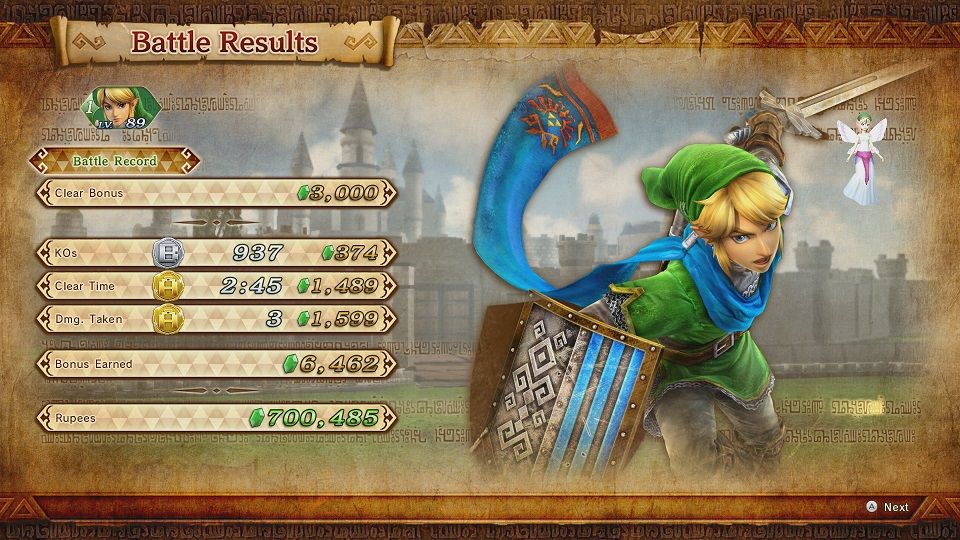
Another thing I noticed is that the missions in the map present in all versions of the game tend to be more like the 3DS version in the Switch version. Mission descriptions use the 3DS version's text and time limits have been relaxed on a lot of the earlier timed missions despite the enemy count returning to console levels.
Much like the Wii U version, this entire game can be tackled with a friend in a rather awkward to setup co-op mode. It feels tacked on, especially in the menus where you have to manually activate co-op on player 1's controller every stage. In this version, Player 1 also must select player 2's character, where as in the Wii U version the second player took control for those menus.
These problems don't actually matter once you're in game as this is the best multiplayer experience that you can get with Hyrule Warriors. The loss of a second screen for each player is a bit unfortunate but understandable considering the Switch lacks the Wii U's tablet.
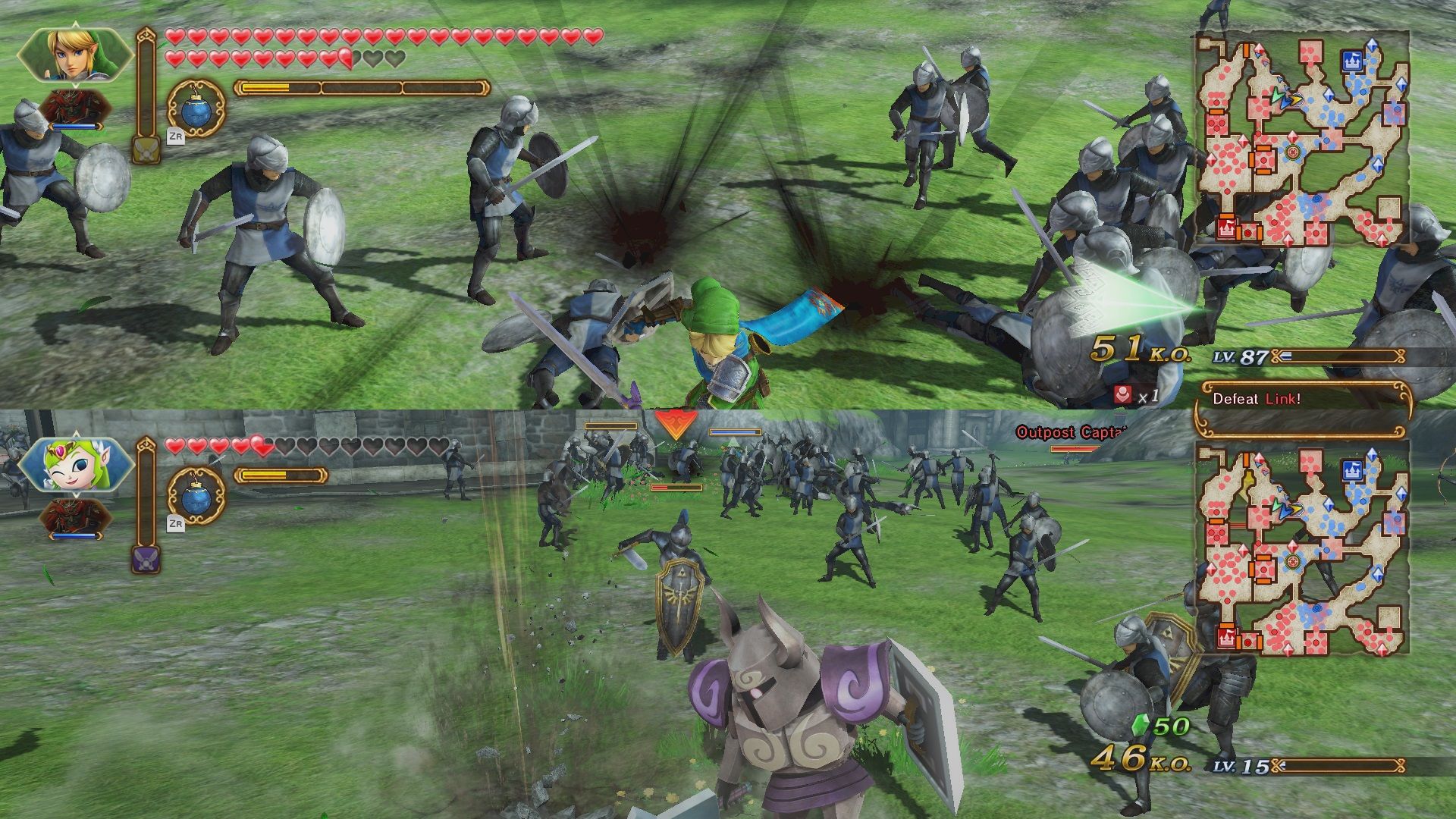
On the plus side, multiplayer packs a much bigger punch in Hyrule Warriors: Definitive Edition. Multiplayer tends to run at 30 FPS, though it does sometimes hit 60 FPS in some of the smaller maps. Enemy count in multiplayer is much better than on Wii U and you won't find one of the players barren for enemies while the other is locked in a battle.
Another thing I need to mention is that the game's controls have been altered a bit compared to the Wii U version. All characters can turn much faster. While it doesn't change much, I just felt the need to mention it as I felt it's one of those things you only notice when bouncing between versions.
Definitively Buggy
While usually I'm a bug hunter within emulated titles or in games I speedrun, this is one of those games where just about everyone will run into a rather severe issue if they play it long enough. It's easy enough to work around and isn't very dangerous, but it's a bug I need to mention as part of the experience.
Because the Nintendo Switch allows you to sleep games without ever turning them off, it's very easy to end up unintentionally cause this game to go haywire. The longer it's left on without rebooting... the more things seem to get messed up over time. All of the following glitch demonstrations are taken directly from console. These are not emulator bugs.

The screenshot above is from last year when I first got the game and was shocked to see it break so spectacularly. I didn't know what caused it back then or how to reproduce it. Once the game crashed, it was gone.
While tons of other people have reproduced this bug and captured footage of it, one of my goals coming into this article was to try to and figure out what was going on myself. Unfortunately, despite my contacts in the emulation community, no one was able to give much of an answer.
Despite that, I continued testing and finally got the bug to start happening again. With my capture card always recording, I recorded a ton of footage of the issue hoping to make some sense of what was going on. In the end, I did figure out what was going on with multiplayer, but I still don't know why the game breaks the way it does.
As one last note, despite how severe this bug is and the fact it will eventually crash the game, I have not seen anyone lose any progress because of it. If the game is going to crash, it seems to do it on stage load before you've accomplished anything. And, with the game's generous autosaving, even if it did crash during a stage, you'd rarely lose more than ten minutes of progress.
The Experimental Switch Emulation Scene
While Cemu may claim to be experimental, it's much closer to what I'd call a general use emulator at this point. I had a few issues learning the ins and outs of graphics packs, installing DLC, dumping my NAND and all of that, but the emulator itself is incredibly impressive and the game is playable. The Switch emulation scene is more along the lines of what I'd call experimental.
yuzu and Ryujinx are the most complete Switch emulators available right now. At most, I just hoped one of the emulators could boot the game. Anything beyond that was a bonus. Thankfully, yuzu provided me with a pleasant surprise.
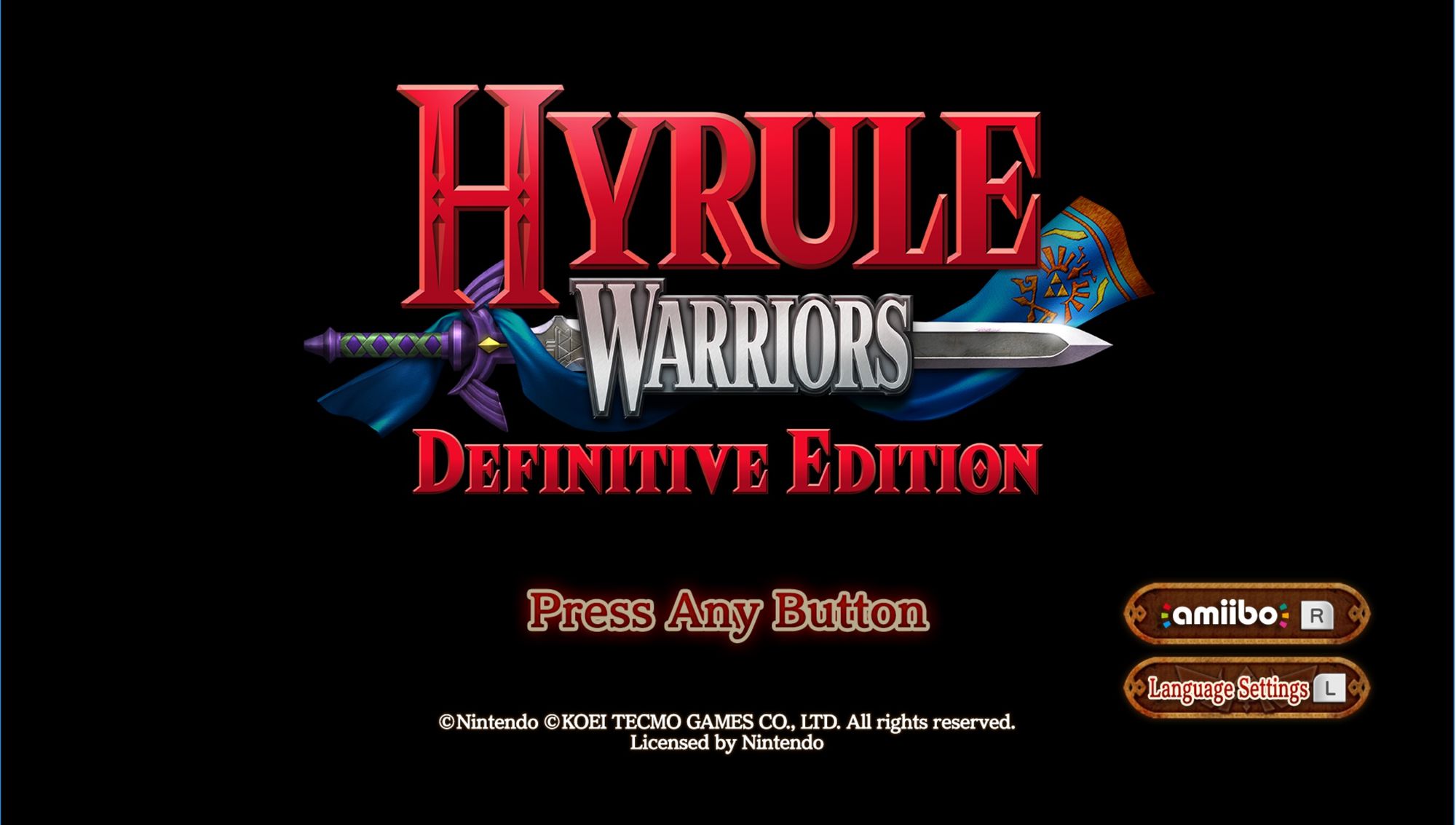
Let's get one thing out of the way right now: yuzu requires a lot more power than the other emulators and is much earlier in development. 2D graphics displayed fine outside of FMVs, audio worked, and honestly I was impressed the the core game played correctly. While it took me a several hours due to the game running at ~5% speed, I did beat the first two missions in yuzu to capture some footage.

Don't let yuzu fool you, while it may look like a bunch of the graphics are missing, it's actually rendering everything quite well. If you manage to get the right group of effects to line up, you can see that all of the models are fully present and textured correctly.

Active Development
So that's it with yuzu, right? Not quite, as developers gave me a heads up that maybe I should wait a little longer before etching my thoughts in stone. So I waited for the September Patreon build to see what they had in store...
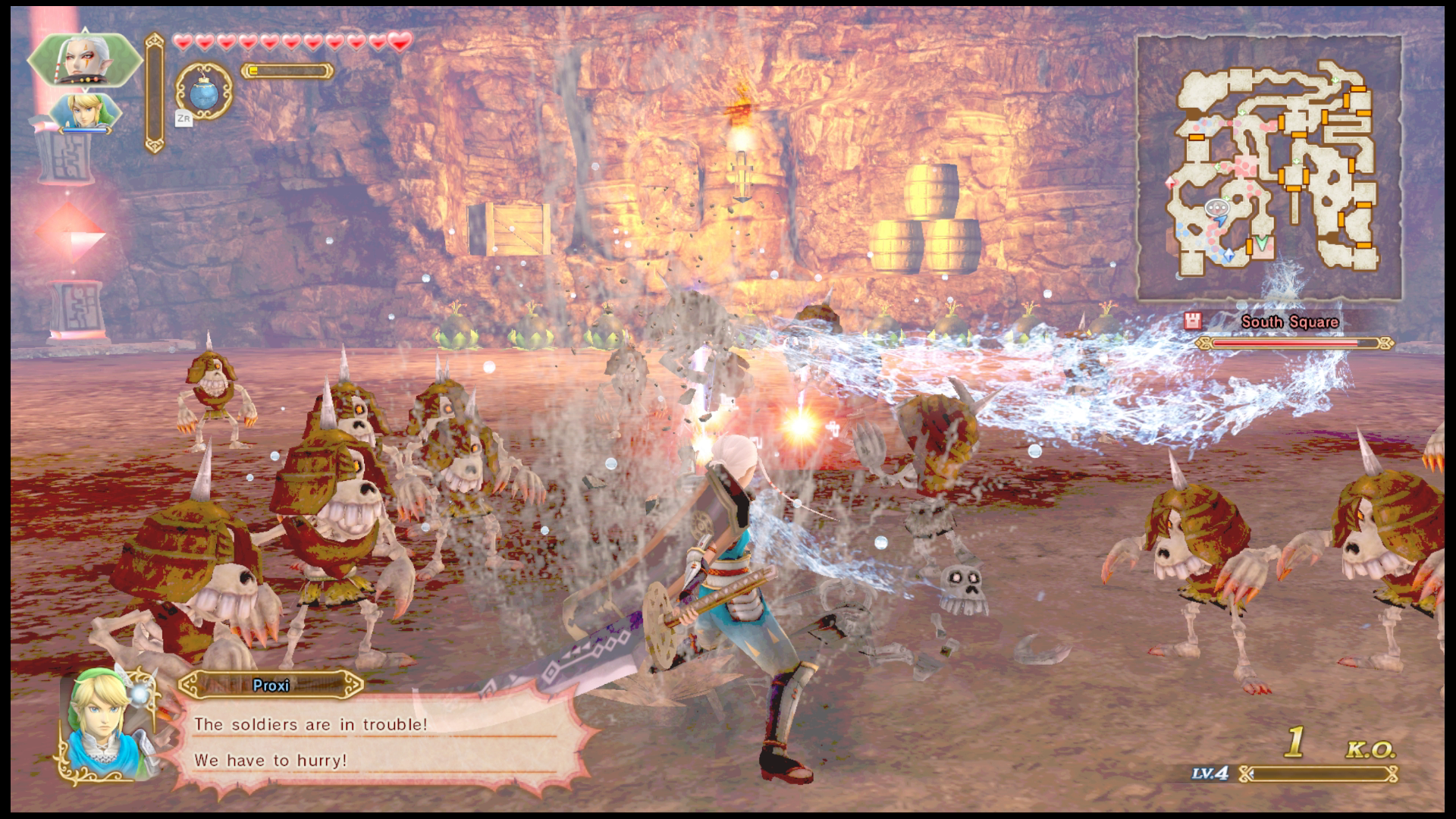
I got a preview to look at some of the improvements they were making and was astounded. The game looked recognizable was pretty close to working. Then I got told to wait again.
So I waited. A few days later, I got an update that the coloring issues would be fixed. However, along with that fixed seemed to be a lot more!
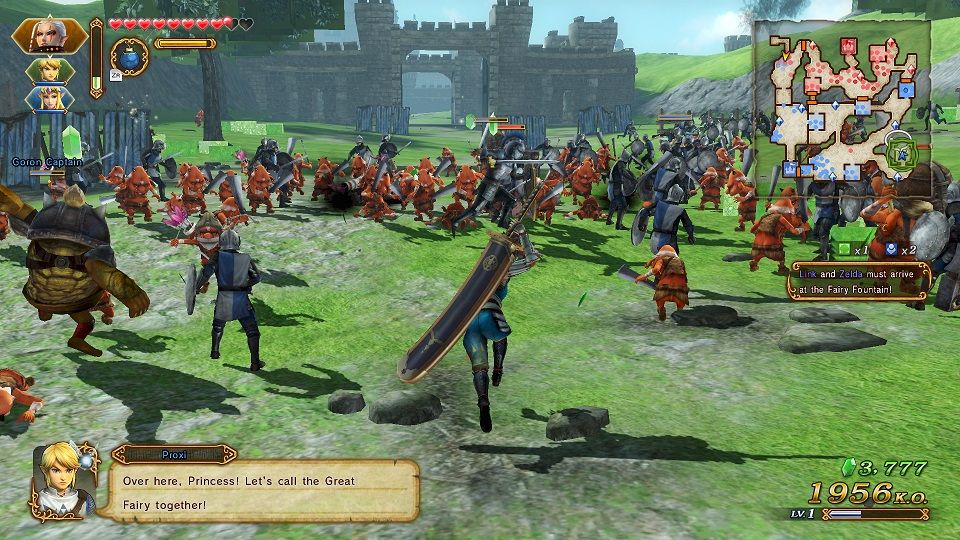
In just a couple of days the game was transformed. Not only was the game rendering in the correct colors, shadows now rendered, water now rendered, and most of the other missing graphics were now present.
If not for a few minor issues with transparency on objects, it'd be incredibly hard to tell yuzu apart from console in some of the screenshots.
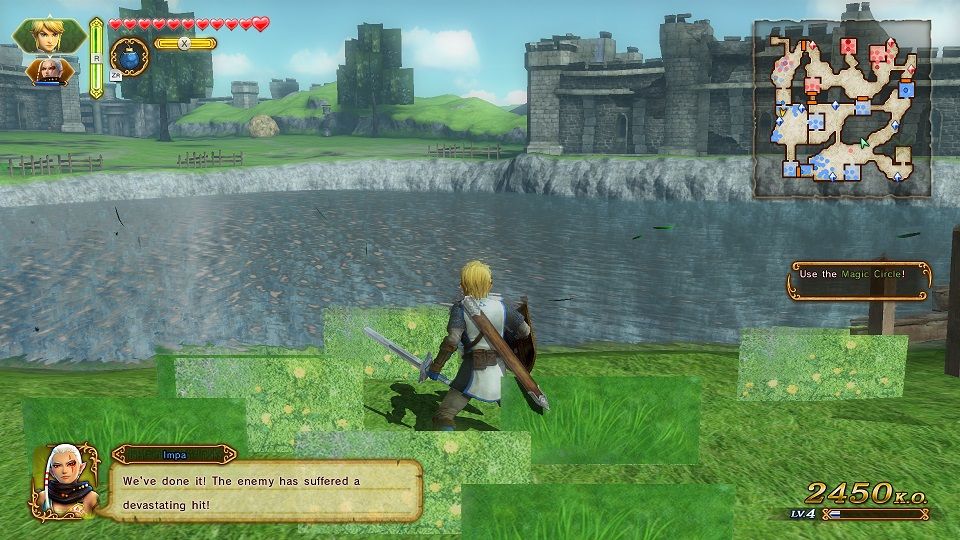
While these improvements over the course of just a couple of days is incredible, I must stress that yuzu is still not a substitute for playing the game on Switch like Cemu and Citra are for their respective versions of the game. Performance is still incredibly slow and FMVs still don't render. Regardless of those minor issues, yuzu shocked me. When I started writing this article, I never imagined the game would look recognizable by the end of it.
Conclusion
The Emulation
After spending a lot of time in all three games, it's clear to say that Hyrule Warriors is in a very good place when it comes to the emulated experience. Both Citra and Cemu can easily replicate their respective target hardware's experience with some nifty enhancements. Just remember to update the game and enable the DLC hack on Cemu so you don't run into the same problems as me!
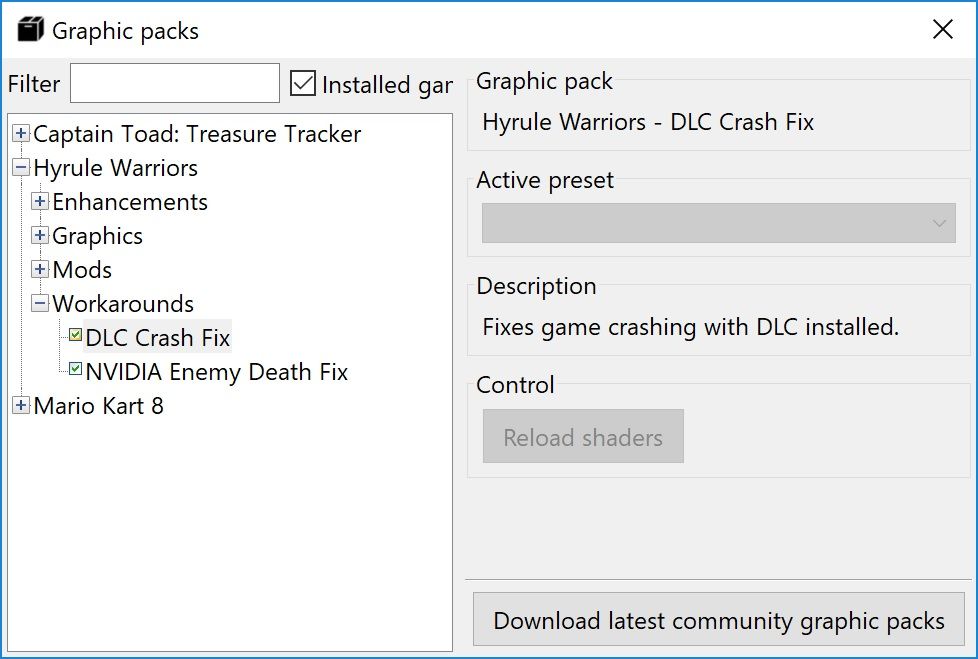
Citra doesn't have any of those issues and the game runs right away. I do highly recommend dumping the update data because it gives you additional content and plenty of quality of life changes to the base game.
If you're willing to deal with some minor graphical issues and spend some time setting things up, both Cemu and Citra are solid options if you want to experience Hyrule Warriors in an emulator. The only unfortunate thing is the lack of full n3DS support, which is the biggest disappointment I have.
On the Switch end of things, there are different expectations and the current Switch emulation scene exceeds them. Before the Patreon previews, I was already impressed that the game booted and was behaving correctly, but now I just don't know what to say. The game is rendering mostly correctly and it seems like the future is incredibly bright. Performance is a problem, but developers are aware of what makes it so slow and are optimistic that future changes could greatly improve the performance of this game.
The Games
As someone who played Definitive Edition first, it was very interesting to go back and play the earlier releases. Unlike typical cross-platform games spread out between consoles of the same generation, Hyrule Warriors had successive releases on Wii U, 3DS, and Switch.
Despite the changing target hardware, developers seemed to care about improving the game with each release. As much as I gave Hyrule Warriors: Legends some flak for the way it looked, it's an incredibly ambitious port that attempts to bring the Wii U game to an underpowered handheld. It has tons of content and even takes advantage of New 3DS hardware to improve the experience further.
In terms of mechanics, the 3DS version also added things like My Fairy and character switching that dramatically changed how you could play the game.
But it's hard to choose either of those over Definitive Edition. It has the best graphics, the most enemies, the most content and sports all of the features from both versions of the game. The only two arguments you could make is that the first stage feels more dramatic on Wii U and the multi-screen multiplayer using the Wii U tablet. Even with those in mind, Definitive Edition is just a better product with faster loading times, more content, and better graphics overall.


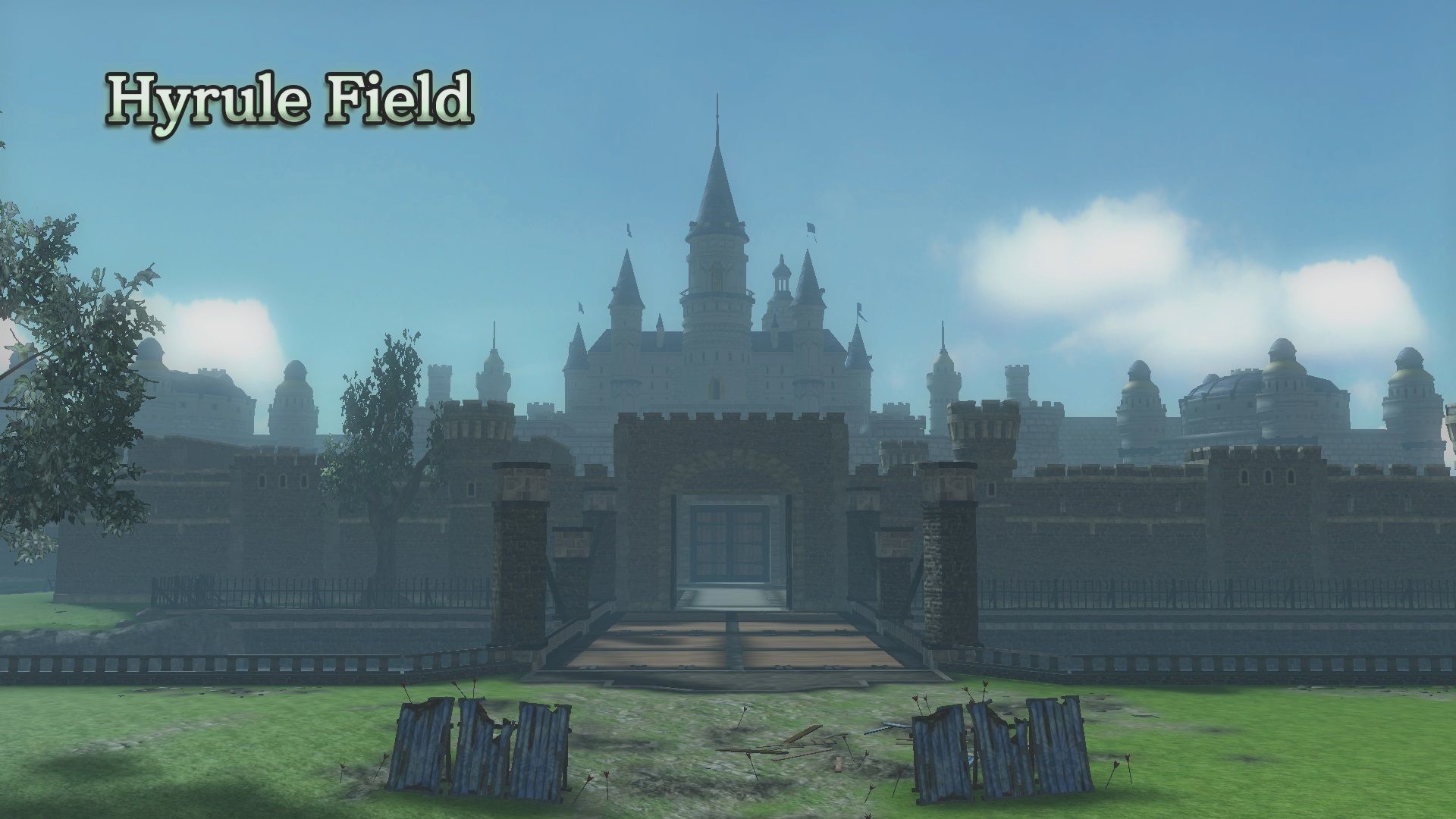
The decision between playing the Wii U version or playing on n3DS is a lot harder. Mechanically, the n3DS version is little better than the Wii U version and the 3D depth the screen can add is very impressive. It's close, but I have to pick the Wii U version due to the stronger hardware and bigger battles. If you have a partner for cooperative play, it just makes the decision a lot easier.
Regardless, of nitpicks, they're both far, far, beyond the original 3DS version that doesn't even allow for use of the 3D screen. That's about all I can say about these games. I hope everyone enjoyed this look at these games and someday I hope to do more writeups like this!
